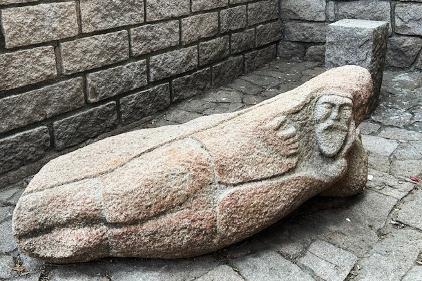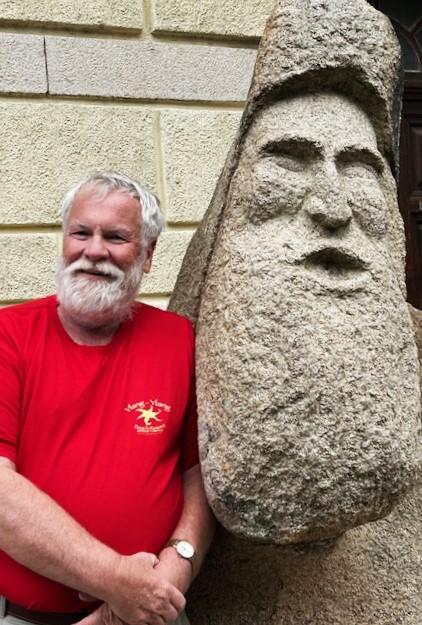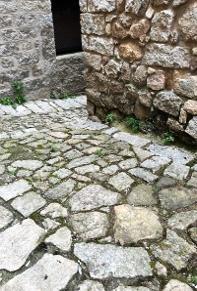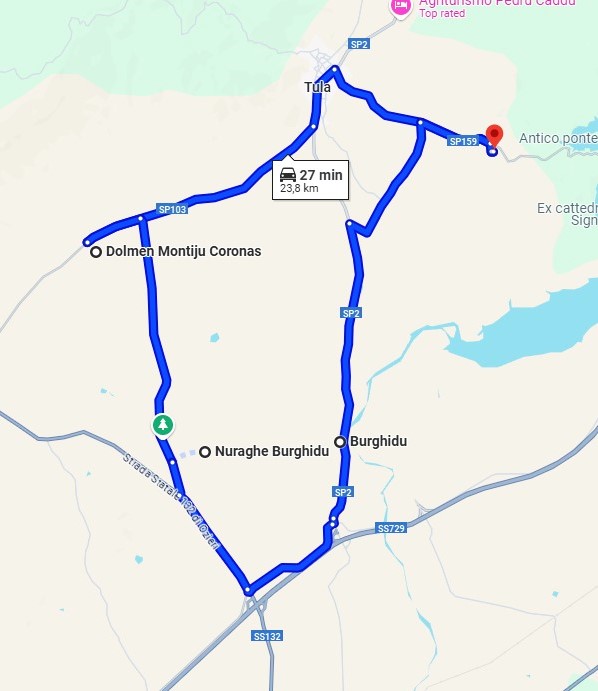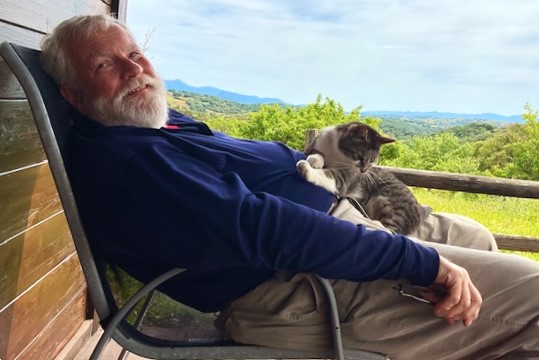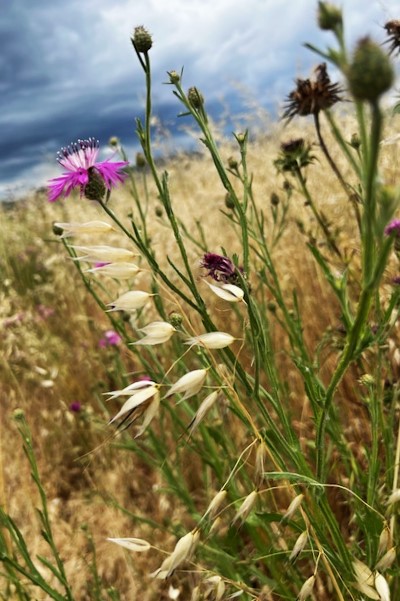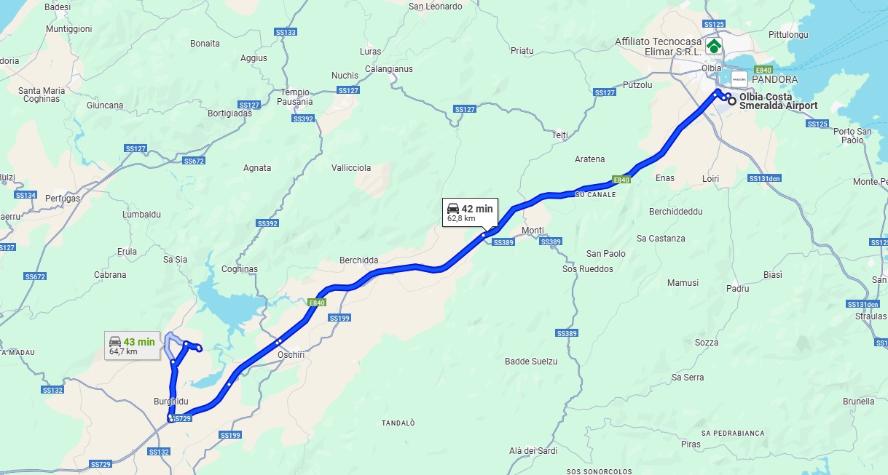Our memories of Italy 2025:
Yet another great trip to Italy. We have a number of wonderful memories, including:
- the beautiful beaches and turquoise water of Sardinia
- the filling and excellent breakfasts throughout
- the cakes at breakfast, especially at B&B Rossodisera
- the pizzas, especially those at Cabo
- our fantastic lodgings, especially Canales, Nascar, Domu Antiga, Locanda Lunetta, Antigas Cortigas,
- Hotel Lucrezia and B&B Rossodisera among others
- our wonderful hosts - Massimo, Stephania, Loris, Marco. Agostino, Barbara, Ignazio, Paolo, Matteo,
- Hector and Anna
- people we met along the way - Randall and Angie, Petr and Martina, Frank and Vera among many others
- the many many animals - donkeys, sheep, goats, cows, horses, some of which were wild
- the early morning sounds of the cuckoo bird both in Sardinia and the Dolomitis
- the terrain of Sardinia - mountains, valleys and beaches
- the beautiful murals in many towns of Sardinia
- Gayle's jellyfish incident
- the abundance of wildflowers
- the bluest of blue alpine gentian flowers
- colourful blooming roses in the various gardens
- Alpine meadows - so green and lush
- our visit to S'Abba Frisca
- the elderly locals - especially Maria who poked her head in our car
- the 'zoo' at Tartarughe with its many unique animals and birds
- while not as impressive as we were hoping for, the flamingos
- the challenging trials and tribulations of navigating
- the 'spaghetti western' village of San Salvatori di Sinis
- the wild horses of Gesturi including the walk through the Giara di Gesturi
- the tortoises, especially 'Bella' eating strawberries and wisteria blooms
- the abundance of local food brought a who new definition to 0 km
- any meal with burrata or buffalo mozzarella
- delicious gnocchi
- Norm squirreling away breakfast bread for use later in the day, particularly for the bruschetta at Luneta
- the wild boar at Il Boscaiola
- a fun evening at Tartarughe with Robert playing guitar, Loris' dancing antics and meeting Petr and Martina
- Loris' meals made 'with love'
- the wide variety of pasta
- the unique Sardinian cuisine, incl. carasau bread, culurgiones, fregula and strozzapreti pasta
- the town of Aggius
- the drive along Lake Garda
- returning from Lake Garda with no map and a dead cell phone - only the sun and Norm's navigational instincts
- gelato stops
- our drives through the Dolomitis
- the landslide
- dinner on the lawn at Agriturismo Delo Relais
- the super-sized 'snack' at B&B Rossodisera
- nonna's meals at Sa Pigalva
- charcuterie and cava at Locanda Lunetta
- dinner in the garden at Hotel Lucrezia
Expenses (based on average exchange rate 1 euro = $1.5609 Cdn):
Here are the costs of our 34 day trip:
$ 3,081 airfare to / from Italy, incl. seat selection ($2,707) and Sardinia to Bergamo ($374)
$ 8,449 lodging ($249 Cdn $ per night)
$ 2,850 food ($84 Cdn $ per day for dinner etc. including wine; breakfasts are included in lodging)
$ 2,614 vehicle ($2,169 or $64 per day for the vehicle; fuel of $422; tolls $14 and parking $9)
$ 116 souvenirs
$ 135 entrances
$ 126 miscellaneous - primarily tips
$17,371 for 34 days
The total cost excluding airfare and souvenirs (i.e. lodging, food, entrances, vehicle and miscellaneous) was $14,174 or $417 per day, with lower lodging and food costs compared to recent trips.
Following are the average costs of this and our three previous trips to Italy.
Exchange Total Lodging Food Car Rental
2016 $1.51 $ 362 106 euros / $ 160 50 euros / $75 $ ?
2018 $1.55 $ 348 127 euros / $ 197 60 euros / $93 $ 23
2022 $1.42 $ 408 138 euros / $ 195 60 euros / $85 $101
2025 $1.56 $ 417 159 euros / $ 249 54 euros / $84 $ 64
Lodgings were somewhat more expensive, both in euros and converted to Cdn $ due to the higher exchange rate. Food costs - essentially dinner with wine - were a tad less than our two previous trips, especially when one factors in inflation, but we would not have wanted to eat (or drink) any more. The ridiculously inexpensive pizzas certainly helped bring the average down. Although still somewhat pricey it was nice to see the car rental costs drop from the spike in 2022, no doubt the result of Covid.
Our lodging ranged from a low of 75 euros to a high of 228 euros.
All included breakfasts:
Excellent Canales; Nascar; Domu Antiga; Locanda Lunetta: Cortis Antigas; Rossodisera
Good Lucrezia
Decent Sa Pigalva; Tartarughe; La Vinia
Here are the lodgings where we stayed, the amount we paid (in euros) and links to their websites.
We were extremely pleased with our choices of lodgings. While Sa Pigalva was somewhat basic it was also only 75 euros with a very personal family feel. Canales, Nascar, Domu Antiga, Locanda Lunetta, Cortis Antigas, Hotel Lucrezia and Rossodisera were all absolutely excellent - both the lodgings and the breakfasts. Tartarughe, La Vinia Wine Experience and Tenuta Della Relais were perhaps a notch lower in terms of lodgings and breakfasts but in each case the owners / staff were all fantastic - helpful and friendly.
75 euros Sa Pigalva Tula www.sapigalva.com
150 euros Agriturismo Canales Dorgali www.canales.it/en
228 euros Nascar Santa Maria Navaresse www.nascarhotel.eu
228 euros Domu Antiga Gergei www.domuantiga.it
95 euros Fattoria della Tartarughe Sinnai www.la.fattoriadellatartarughe.it
221 euros Locanda Lunetta Mandas www.anticalocandalunetta.it
217 euros Cortis Antigas Gesture www.cortisantigas.it
180 euros Hotel Lucrezia Riola Sardo www.hotellucrezia.com
171 euros La Vinia Wine Experience Sassari www.laviniaexperience.com
138 euros Tenuta Della Relais Verona www.agriturismodelo.it
160 euros B&B Rossodisera Domegge di Cadore www.dolomitirossodisera.com
June 16, 2025 - Domegge di Cadore (B&B Rossodisera)


The front of B&B Rossodisera - our room was on the upper right.

June 15, 2025 - Domegge di Cadore (B&B Rossodisera)

From Auronzo we then drove west and then north up into the mountains until the road split - left to Tre Cime and then south to Cortina d'Ampezzo or north to Austria.
We then turned aournd and returned the same route.
The iconic Tre Cimes attract hjikers as if a magnet.
The Tre Cime di Lavaredo (Italian) or Drie Zinnen (German) are three distinctive peaks in the Dolomitis. The three peaks, from east to west are Cima Piccola ('little peak'), Cima Grande ('big peak') and Cime Ovest ('western peak').
The peaks are composed of well-layered dolomites of the Dolomia Principale formation, some 200+ million years old.
Until 1919 the peaks formed part of the border between Italy and Austria-Hungary. Now they lie on the border between the Italian provinces of South Tyrol and Belluno and still are a part of the linguistic boundary between German-speaking and Italian-speaking majorities.
The Cima Grande has an elevation of 2,999 metres (9,839 ft), standing between the Cima Piccola, at 2,857 metres (9,373 ft), and the Cima Ovest, at 2,973 metres (9,754 ft).

Upon returning to our B&B we spent the early evening packing before heading to dinner in the village. We chose to eat at Antica Hostaria Bar Serenissima (known locally as 'Bar Vecchio', located in the historic Enoteca Hostaria, the oldest house in Cadore. The bar was founded in 1952 but the bulding it occupies dates back to 1360. The bar is famous for its cartufole potatoes, a wild tuber, typical of the area.
Not being particularly hungry we decided to simply share a pizza - the Dumele comprised of salsa di pomodoro, mozzarella di bufalo, pomodorini and pesto alla genovese. Good but not a match for the pizzas we enjoyed at Cabo is Gergie, Sardinia.
As the ristorante / pizzeria is located in Domegge di Cadore it was < 1 minute back to Rossodisera where we enjoyed a bottle of Prosecco we still had with us while we finished packing. It was then to bed early given our travel day tomorrow.





Of course our last meal of the trip was pizza - the Dumele with salsa di pomodoro, mozzarella di bufalo, pomodorini and pesto alla genovese.
After a short detour to Lago di Cadore we went back to Pieve di Cadore, the gateway to the Dolomitis - or so the sign said - and then a clockwise loop into the mountains and valleys through Cibiana di Cadore to the Zoldo Valley and through villages with unique names such as Fop Al Fop and Don. We then headed north to Cortina d'Ampezzo before completing the loop by returning to Pierve di Cadore and Domegge di Cadore and our B&B.

After leaving we soon entered the Val di Zoldo nestled at the foot of the beautiful Dolomiti mountains. Open and fresh the valley is a precurser of what was to come. The Zoldo valley provides opportunities to hike, bike and horeseback ride. One of the more interesting aspects of the valley is the names of some of the villages - like Forno di Zoldo, Fop Al Fop (at the base of mount Fop) and Dont.
Continuing on we entered Val Fiorentina passing Selva di Cadore on an impressively scenic road through mountains and valleys, past cows and horses and a wealth of wildflowers. Busy, narrow twisty roads climbing and desending made it difficult for the driver to really grasp the beauty without stopping, which we did on a number of occasions. It would have been nice to stop for a drink or small bite to eat at one of the refugios but the day was getting away from us and a light mist began so we pushed on.
The drive brought us to Cortina d'Ampezzo, a buzz with construction as the busy town / ski resort is a co-host along with Milano of the 2026 winter olympics. Venues (we saw the bobsled track) were being constructed along with hotels for what will be an onslaught of athletes, media and spectators. Given the limited access we can't imagine how congested it will be. Cortina will play a role in the Opening and Closing Ceremonies of both the Olympic and Paralympic Games along with hosting Women's alpine events, curling and sliding sports (bobsleigh, luge and skeleton). As it was getting late we didn't stop but Cortina d'Ampezzo certainly seemed like a happenig place.
As we were driving back to Rossidisera we noticed what we thought was a large cloud descending the mountain ahead of us. We quickly realized it was not a cloud but rather a landslide. We, and a number of other vehicles, pulled over not knowing exactly what was happening or how serious it was. Turning around (albeit some vehicles did) was not ideal as it would have added hours to our return to Rossidisera. On the other hand it was unclear as to whether the landslide reached the highway. After perhaps what seemed like 15 or 20 minutes we finally saw some vehicles come out of the dust from the other direction. Following others we gingerly pushed on and passed through with no problem. What was surprising was the fact there was no warning whatsoever, but fortunately there were no injuries or damage to buildings and the state road was not blocked.
Which was not the case the next day when another even larger landslide struck the area. According to news reports
"A severe storm caused landslides and flooding throughout the Belluno area. One landslide occurred in the hamlet of Cancia in Borca di Cadore. Reports indicate several homes were hit by debris and that firefighters are working to secure the area and assess the damage. The landslide also affected the state road 51 of Alemagna, which was closed; with several cars being affected."
,
For dinner we decided to try a restaurant - Alla Pineta - a few kms up the mountain from Calalzo di Cadore, reached by a pretty drive ascending the valley along the Torrente Molina river. The ristorante was quite full meaning we ate outside. Our dishes were both unique, with a 'mountain' twist. Gayle had the Pizzocheri con spinaci, patate, formaggio, gran, burro fuso e salvia (Pizzocheri, a flat ribbon pasta made with a blend of buckwheat and wheat flour is believed to have originated in the nearby Valtellina valley of Lombardy. This version had spinach, potatoes, cheese, parmesan, melted butter, sage and poppy seeds.) Different and very enjoyable. Norm ordered the Piatto del Bosco con polenta, funghi, salsiccia e formaggio alla piatra (the Piatto del Bosco or 'Plate of the Forest' or 'dish of the Wood' - a meal of ingredients commonly found in or associated with a forest, such as mushrooms, wild game, truffles, berries or other foraged items. Tonight's dish included polenta, mushrooms, sausage and melted cheese ... delicious). For dessert Gayle enjoyed the Tirimasu (perhaps not as good as others she had on the trip but still nice) and Norm the Chocolate Amaretto cake that came recommended but was too sweet for his taste.
While enjoying our meal we met and chatted with Luca and Frederica. Luca in particullar was very extraverted, no doubt the focus of whereever he went, with Frederica being considerably more reserved. We chatted about the upcoming Olympics and his involvement in a significant basketball tournament coming up. It always adds to the experience when we meet and interact with locals.
As indicated at the beginning of this long post (with lots of photos) a very full day.
Sandy and Philipp, friends of Anna, from Switzerland.
Spring time in the mountains means a variety of flowers.






You lookin' at me?
Certainly not wild horses given the horse bell.



But with a desire to check out the Dolomites in each direction we decided to head out on a 'short' (55 km in theory 1 1/4 hours, but for us much longer) drive north-east, then looping back around to Villapiccola and returning to Domegge di Cadore and Rossodisera.
The drive was very scenic with mountains on all sides, lakes, rivers, forests and mountain flowers.
The Dolomites, technically part of the Alps, extend from the River Adige in the west to the Piave Valley (where we are) in the east with 18 peaks rising above 3,000 metres. The mountains feature beautiful landscapes with vertical walls, sheer cliffs and many narrow, deep, long valleys.
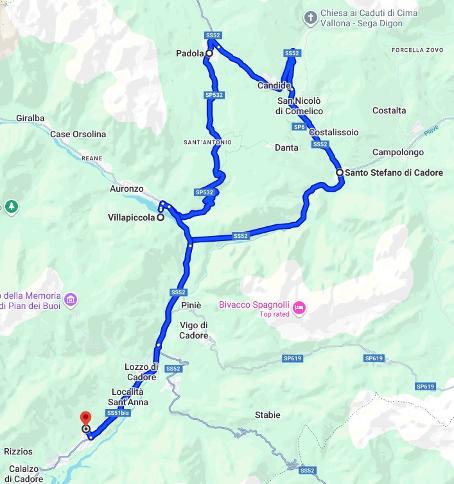
The Dolomites have recently been delared a UNESCO World Heritage Site due to their diversity of spectacular landscapes, pinnacles, rock walls, glacial landforms and fossils. The area is characterized by frequent landslides (more on that tomorrow), floods and avalanches.
During our drive we scouted out a couple of restaurants, choosing Boton D'Oro, a mountain restaurant with seasonal local dishes including dairy products / cheese along with sausages and cured meats produced on Boton D'Oro's own farm.
We enjoyed a very nice meal with a number of different and intersting choices. We were served some delicious mountain bread and focaccia with whipped butter, so good we asked for more. Norm then had a selection of artisanal charcuturie with pickled sunchoke - edible tubers of the sunflower plant. Then for our main courses Gayle enjoyed the Aubergine parmagiana - fried aubergine with basil mayonnaise, tomato confit and Boton D'Oro stracciatella while Norm ordered the Deer sirloin with bluebery reduction served with cabbage. Both dishes were beautifully presented, and excellent. We accompanied our meals with nice glasses each of Valpolicella Classico (3.0 euros or $4.80 Cdn each). When Norm saw Apple strudel on the dessert menu he simply could not resist.
It was more or less a 10 minute drive back to Rossodisera to bring an end to a wonderful first day in the Dolomites.su
fea
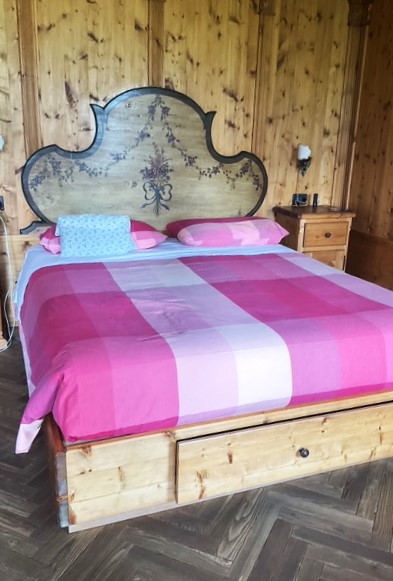
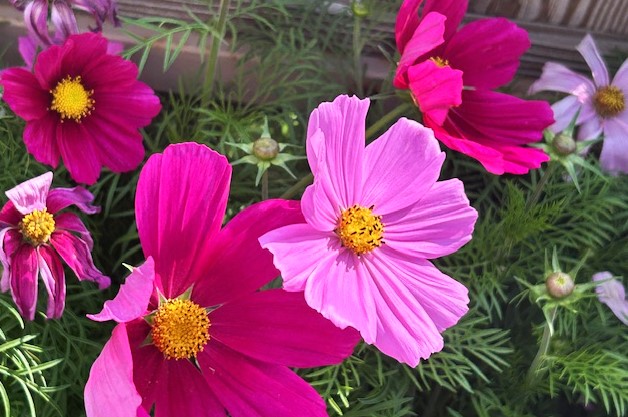
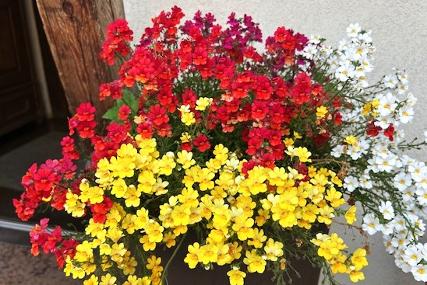
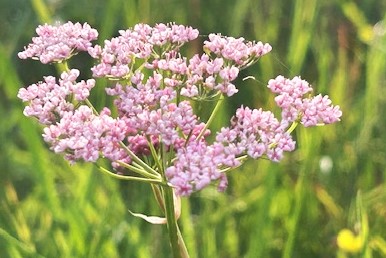
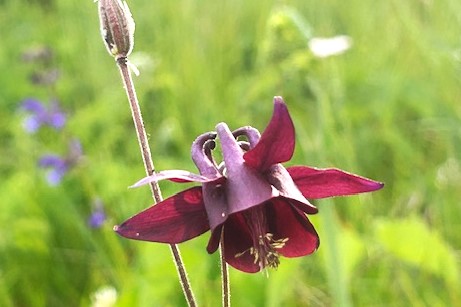
A selection of artisanal charcuturie. Deer sirloin with cabbage and blueberry reduction.
We started heading east towards Vicenza, like the drive from Bergamo to Verona, not particularly attractive with considerable industry. Again we should have taken the highway to save time.
We then headed north up into the mountains and beautiful countryside through Asiago, Gallio, Foza and Enego. Then back to to a less exciting drive to Belluno before turning north into the Dolomities which are stunningly dramatic.
The last stretch was along the River Piave to Pieve di Cadore and then on to Domegge di Cadore and our ultimate destination B&B Rossodisera where we were greeted by Anna.
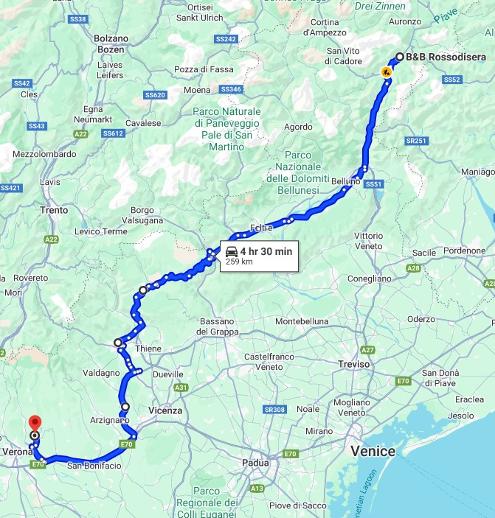
As it turned out we were very impressed, and so full we could not eat it all. We had bread, cheese, salumi and mortadella, pickled vegetables, mozzarella balls and tomatoes in garlic, accompanied by a very nice bottle of regional red wine. All, including the wine, for only 40 euros - not exactly a snack. A fantastic service that Anna provides.
During dinner we enjoyed a lengthy chat with Vera (from Germany) who we invited to join us for a glass of wine
What a perfect end to a long day on the road - arrival at a very nice B&B, a warm welcome by Anna, a delicious meal looking out to the mountains, and a wonderful chat with another guest. A great start to our stay in the Dolomites.
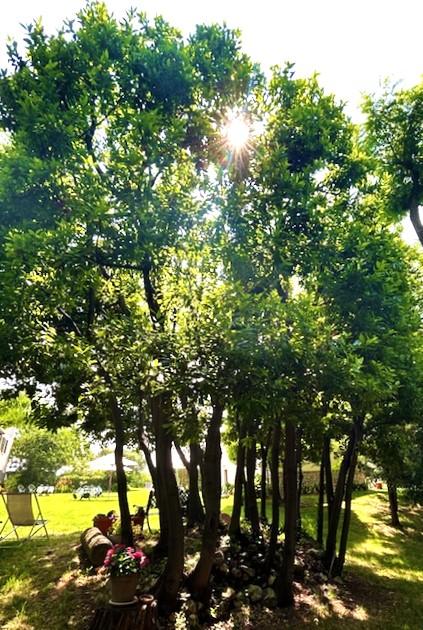
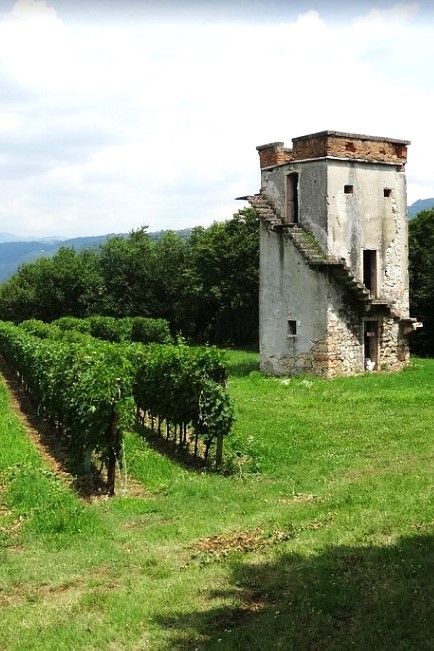
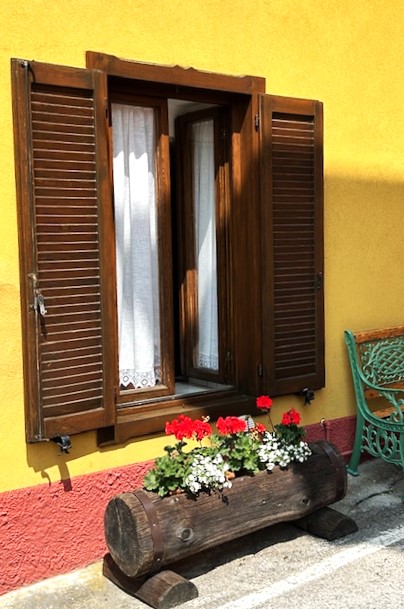
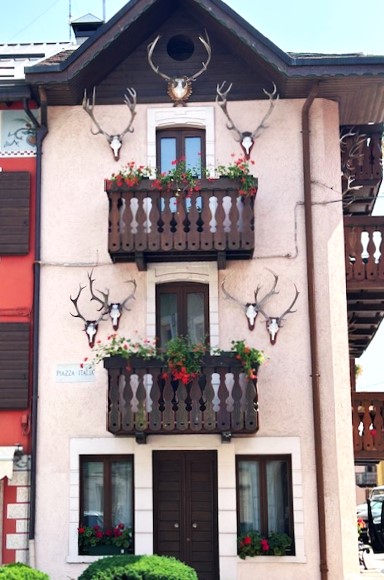
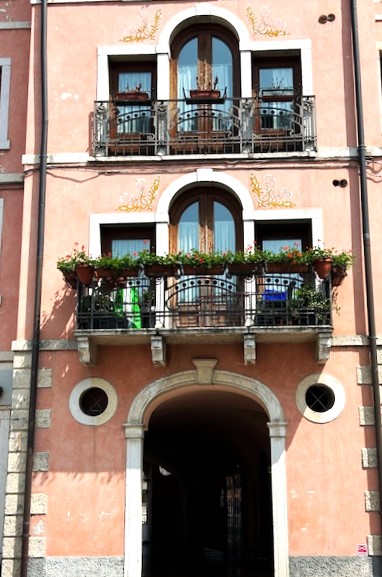
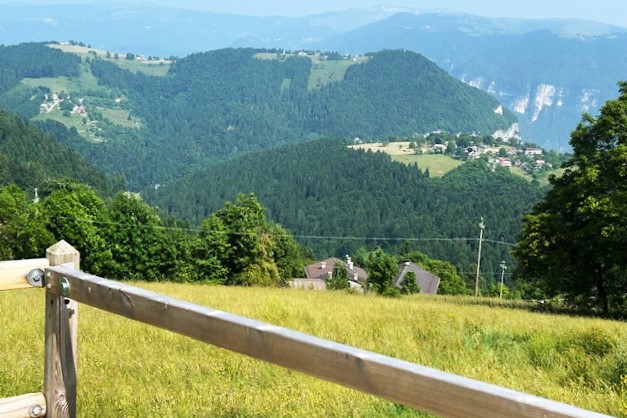
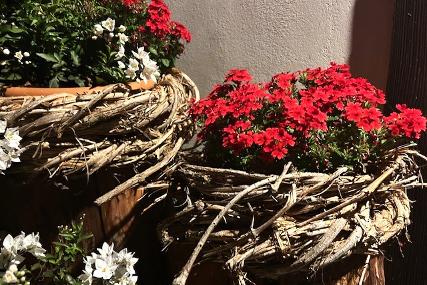
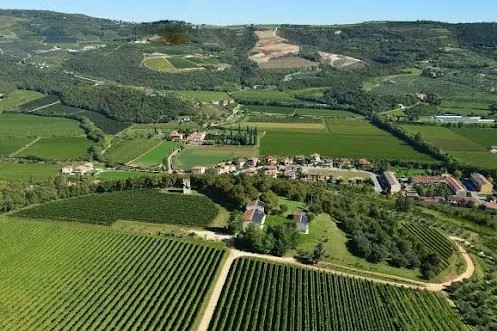
(photo courtesy of Tenuta Delo Relais website)
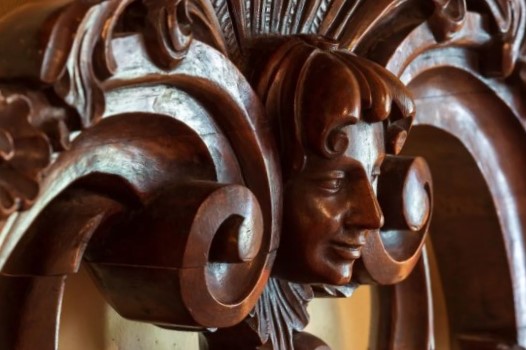
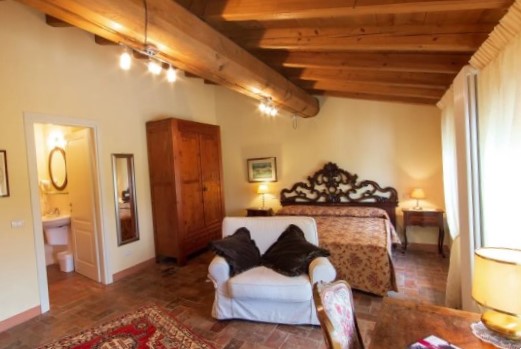
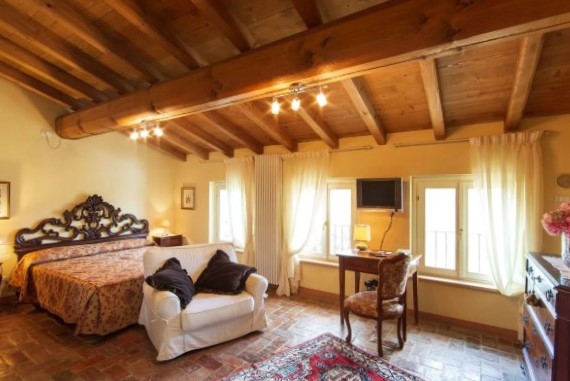
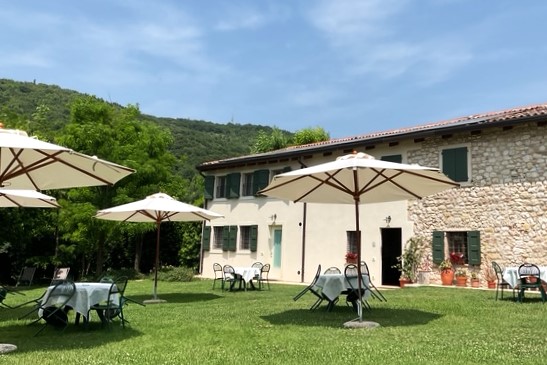
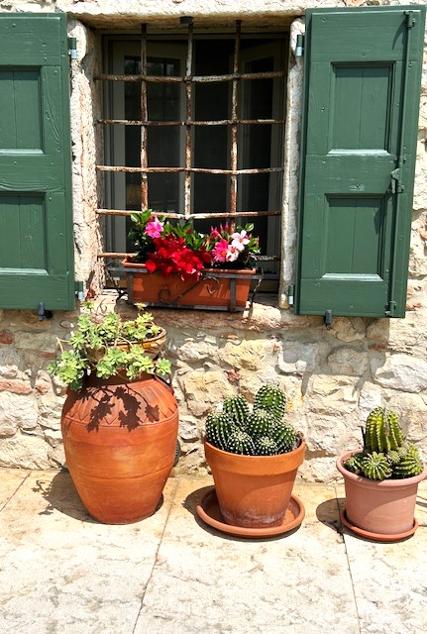
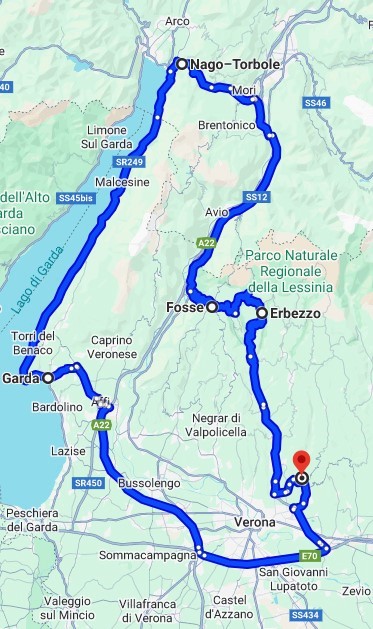
We initially passed through the very well known wine regions of Valpolicella (being the wine produced by Tenuta Delo) and Bardolino before reaching the town of Garda. From there the road hugs the side of the lake with pedestrian and bike paths along most of the 40 plus kilometres.
There were a fair number on the numerous (rocky) beaches along the way although very few swimmers actually in the water.
It was very picturesque with the lake on the left and mountains on the right. We suspect the drive up / down the west side of the lake would be similarly beautiful as it too was framed by a number of mountains.
Directions were somewhat lacking the last stretch from Fosse but somehow Norm's instinctive GPS found the way.
The drive back started fine - just head inland and then down the valley towards Verona. But after we decided to take an even more rural road to Fosse and Erbezzo through some beautiful twisty roads up and down mountains and valleys directions became few and far between. We would have been fine had we had our internet access but unfortunately Gayle's phone ran out of power so we were on our own. While there were moments where we were unsure of where we were I just followed my instincts until we saw the familiar convent on a hill. Shortly after we found the road to Tenuta Delo Relais and all was good.
Tenuta Delo Relais does not advertise serving dinner but we guess on occasion they do as they asked us if we would be interested in dinner out on the lawn. We quickly accepted. We were the only ones having dinner - a loss for others. Our table was beautifully set with flowers - very romantic.
We started with a pasta dish - strozzapreti with pesto. Also known as 'priest choker' or 'priest strangle' this is an elongated form of cavatelli. There are a number of theories as to the name. One is that gluttonous priests were so enthralled by the savory pasta that they ate too quickly and choked themselves. Another explanation involves the azdora, or housewife who would 'choke' the dough strips to make the strozzapreti. The azdora would express rage (perhaps triggered by the misery and difficulties of her life) and curse the local clergy, resulting in a pasta that could choke a priest.
For our second course Gayle had fresh burrata with tomatoes, fresh basilica and olives. She couldn't hide her smile and pleasure when the dish was brought to the table. Norm had Bresaola with greens and parmesan. Bresaola is a dry-cured beef from the Valtellina valley of Lombardy. Made from lean beef, typically the eye of round, defatted, seasoned and then air-dried for several weeks or even months, the result being a dark red, almost purple, lean meat with a delicate, slightly sweet flavour.
Dessert was a choice of tartufo like ice cream balls. Gayle, not surprisingly, chose the Chioccolata while Norm the Pistacchio.
Beyond the lovely meal in a lovely setting another benefit was the short journey from our table to our room.
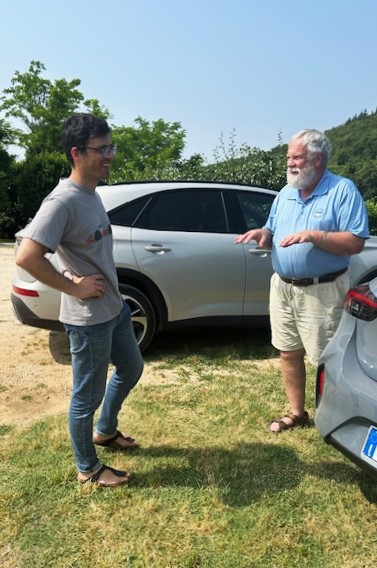
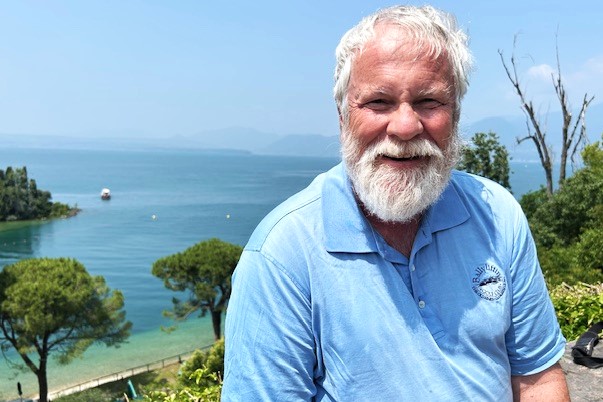
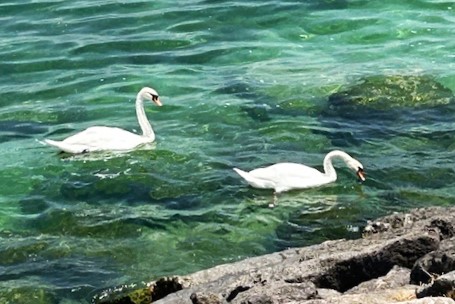
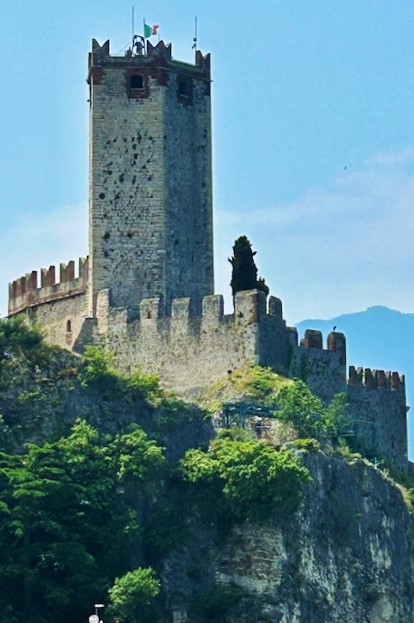
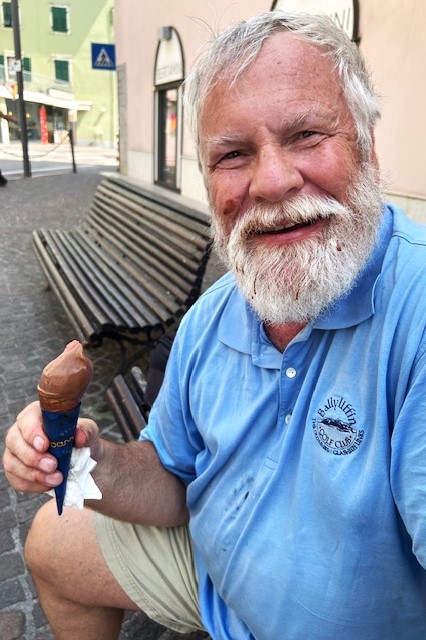
Ice cream - Pistacchio and Cioccolatta.
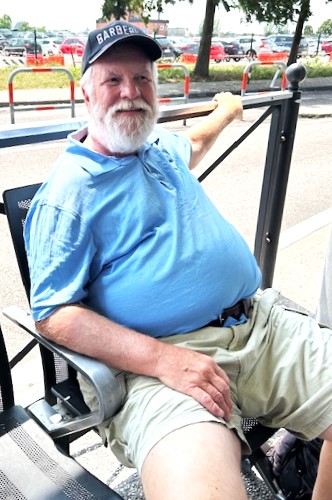
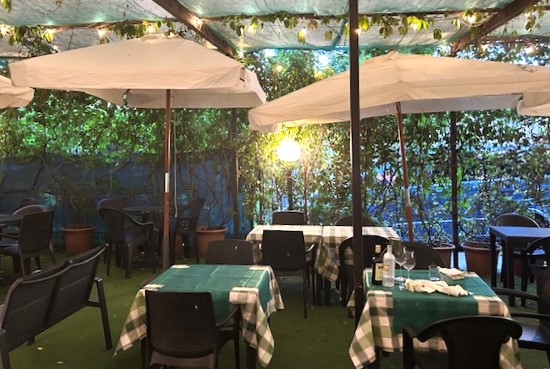
A nice chicken plate.
A caper flower. Not sure what this is.
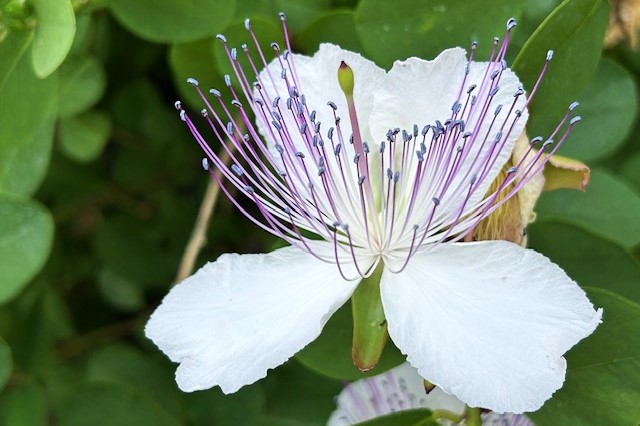
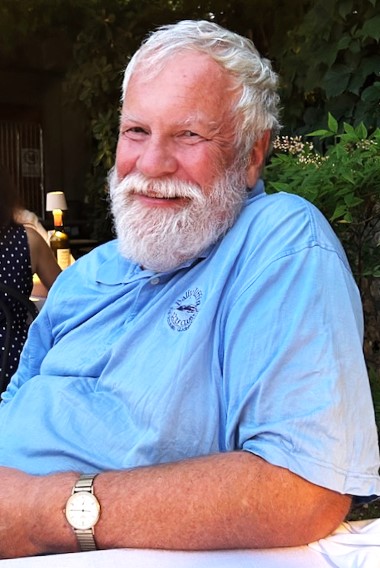
Salsicce. Risotto al Funghi.
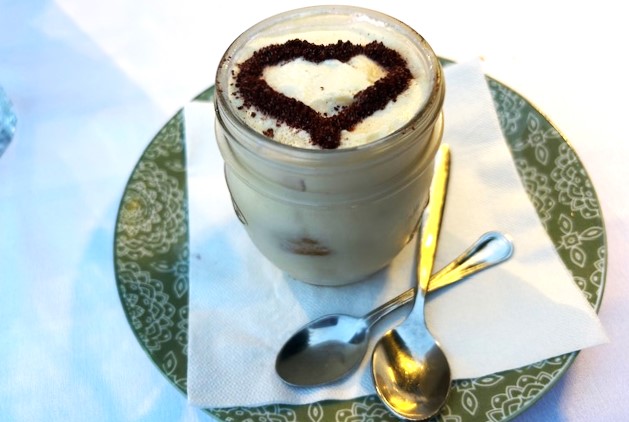
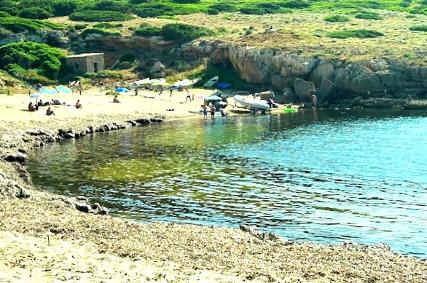
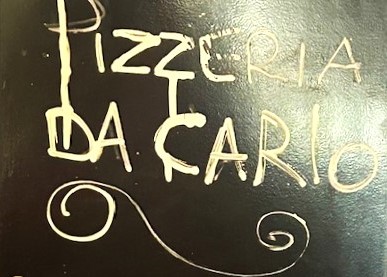
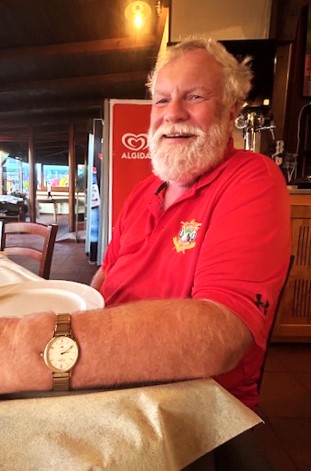
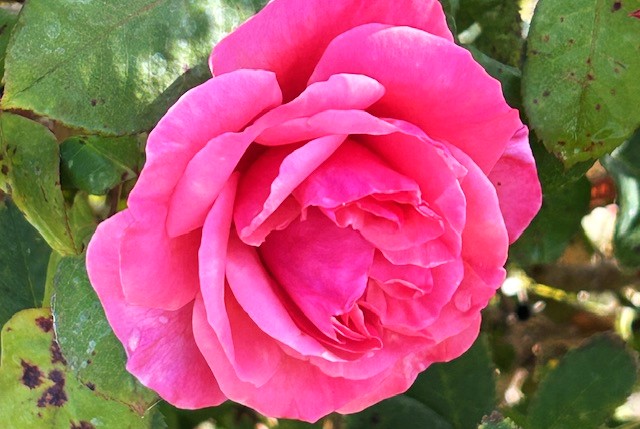
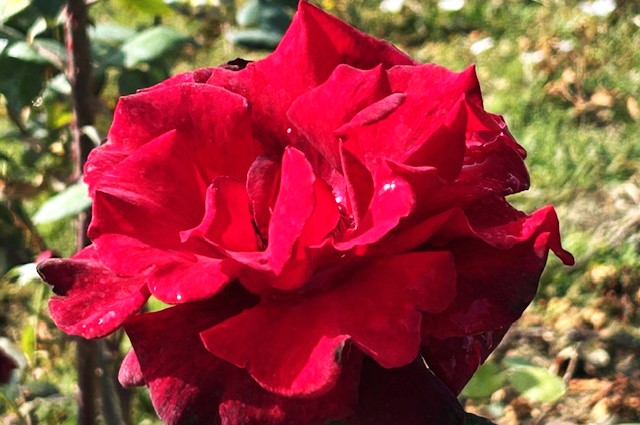
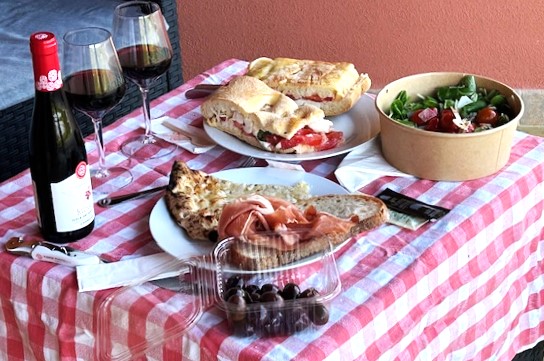
We headed north, again past S'Archittu and on to Bosa. The drive from there to just south of Alghero is quite dramatic, hugging the coastline with mountains just to the east.
With beautiful sea scenery and lots and lots of wildflowers, and these reddish bushes there was incentive to stop around just about every corner. Fortunately we had another warm / hot day with nothing but sunshine. Linda and Bill had reported how much they enjoyed the drive and right they were. It was very impressive.
No doubt Alghero has a nice central core but our drive through the outskirts with not much more than a number of small apartments was underwhelming.
As we continued north east the terrain flattened out with many vineyards in the region. We ultimately found our way to La Vinia Wine Experience and Podere Parpinello, the family's winery. A very new and modern lodging with a nice pool we have a great room looking out to the vineyard and a number of cork trees.
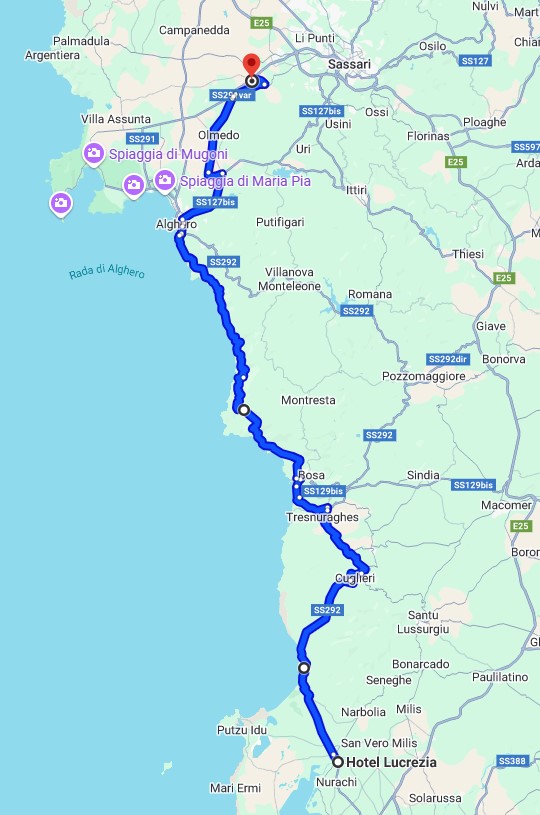
Matteo suggested a ristorante in the nearby town of Olmedo, in which the setting sun brightly spotlighted a couple of churches. Amisicora was so typlically Italian - crowded and noisy - lots of atmosphere. Gayle had the 4 Formaggi pizza - large, delicious and only 8 euros while Norm started with the La Scottadito d'Agnello alla Griglia e le Verdurine croccanti agrodolci (grilled lamb chops with sweet and sour crunchy vegetables) and then a simple plate of Spaghetto al pomodoro e basilica. The lamb chops were nice but the spaghetti somewhat bland and only so so. We accompanied the meal with wine from where we were staying - actully Kressia, the name of our room, which we very much enjoyed.
The drive back took 15 minutes after which we were fast asleep.
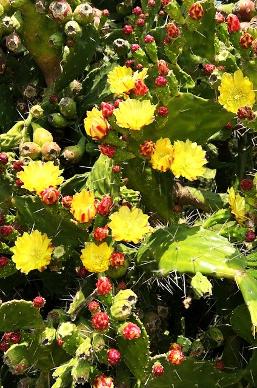
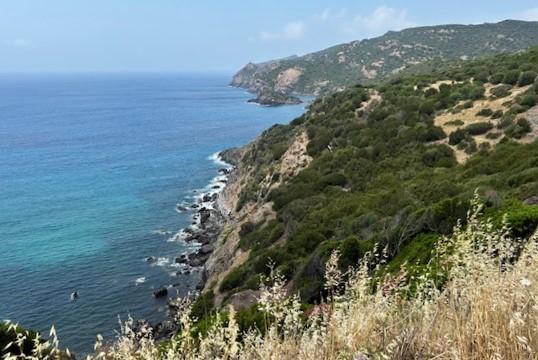
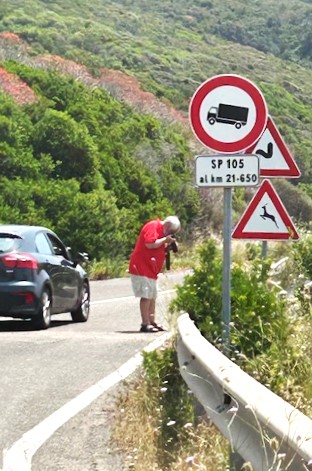
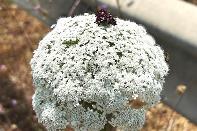
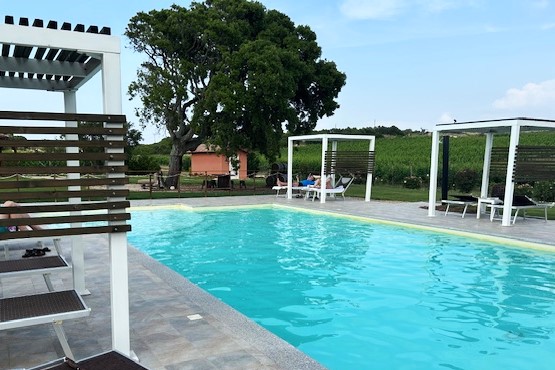
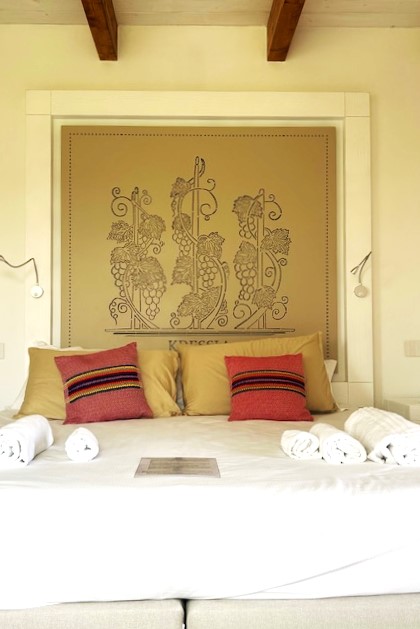
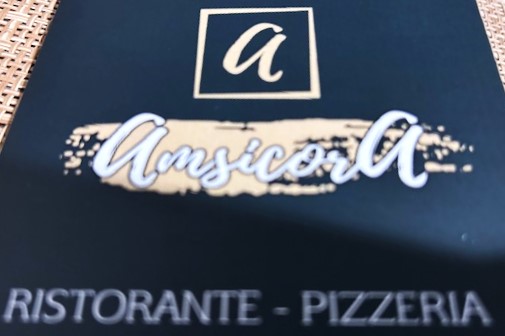
Nothing but cheese - the 4 Formaggi pizza.
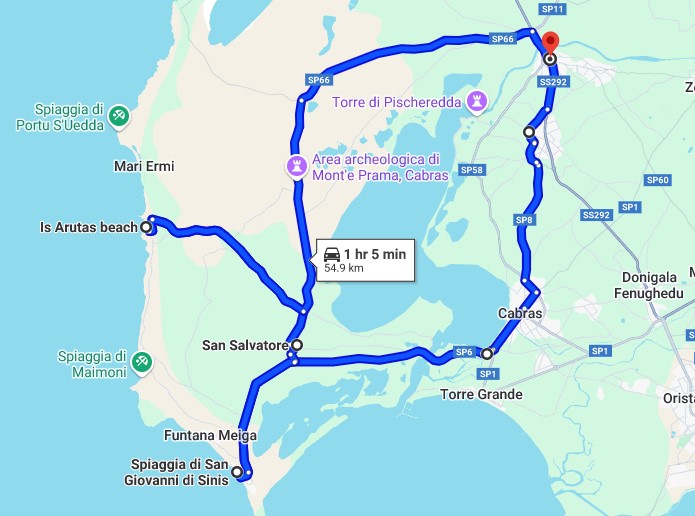
You can see the water near Cabras, a town we were told might have flamingos. Perhaps other times of the year but unfortunately not now - our search for the elusive flamingo was in vain.
We continue south-west through some nice landscape to Giovanni di Sinis before returning to San Salvatore di Sinis
San Salvatore di Sinis is a small medieval village that is both a place of worship and a location of a famous movie set. The village's current appearance dates back to the Spanish domain and owes its name to the Church of San Salvatore built on a prehistoric sanctuary carved into the rock. In the center of the village is the 17th-century Chiesa, standing over a stone ipogeo (underground vault) dating to the nuraghic period. This originally housed a pagan sanctuary linked to the cult of water with a well still visible in the main chamber.
San Salvatore di Sinis is built in an area that has been sacred since the Nuragic age. It was transformed for over two decades (1967-1990) into a set for filming ‘Spaghetti Westerns’. Many house facades in San Salvatore were transformed into western towns in the 1960s during the heyday of Spaghetti Western movies due to the resemblance of the town / area to the landscapes of the American frontier. It was thus used by film producers to become a village of Arizona or New Mexico (saloon included) in films such as ‘Garter Colt’ (1968).
San Salvatore di Sinis is also known for the Corsa degli Scalzi (the Barefoot Race) a tradition dating back to 1619, when men ran through the countryside barefoot to save the statue of the saint from a Moorish raid. This ‘running around’ tricked the Moors into believing that they were facing a large force, causing them to flee. This act of ruse led to the rescue of the saint and the village.
On the first Saturday of September hundreds of men dressed in white, known as Is Curridoris, collect the statue of San Salvatore from the Church of Santa Maria Assunta in Cabras. They then carry it barefoot along a 7 km dirt road to the village of San Salvatore. The following day, the Is Curridoris bring San Salvatore back to Cabras. During these days, both villages come alive with music, singing and stalls offering local food and wine.
The main purpose of our day was a swim in the sea. After our stop in San Salvatore di Sinis we veered to the coast and Spaggia Is Arutas. The beach was reasonably crowded for mid week but when we parked (4 euros for two hours) and strolled along the boardwalk we understood why as we were welcomed to a long essentially sandy (very small pebbles) beach adjacent to a calm turquoise sea. The water was fairly warm, being enjoyed by many, including us.
For dinner we went to Il Boscaiola (The Woodcutter) in nearby Nurachi, recommended by the other front desk person at Lucrezia (never did get her name). We started with Le Focacce Caprese with pomodoro fresco, mozzarella di bufala and basilico - essentially a pizza without sauce. Gayle then had an Insalata del Nostro Orto - actually a very nice salad along with Patata Arrosto (roasted potatoes). Although Norm was teased by the 1 kg of a variety of meats (50 euros) he went with the Brasato di cinghiale del Montiferru - braised wild boar from Montiferru (a region north of Riola Sardo) cooked with mushrooms. An excellent choice. We were both too full to even consider dessert. One of the best restaurants and meals of our trip.
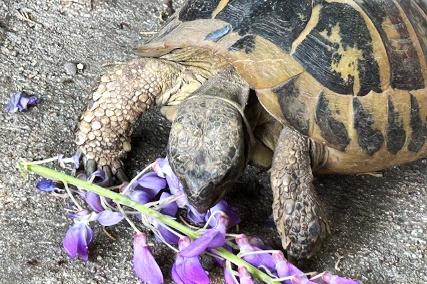
There was a decent crowd on the beach this nice afternoon.
In Lucrezia's time, the house was different. The structure was the same as it is today, but the rooms had different uses. The connecting rooms, now the bedroom and bathroom, were originally the parents' room and that of their daughters, who had to be supervised at all times until marriage. Sons enjoyed greater freedom and were therefore housed on the upper floor, without direct supervision.
The garden, now a small green oasis, once had every space dedicated to produce. Alongside the ever-present citrus tree, usually a lemon, as oranges and mandarins were grown on the land outside the village, the courtyard housed a small vegetable garden for domestic needs and a chicken coop.
Further on, in the annex, now a suite, were the millstone and the oil press, and the stables to house the donkey and horse."
Below: the courtyard has roses ... lots and lots of roses.
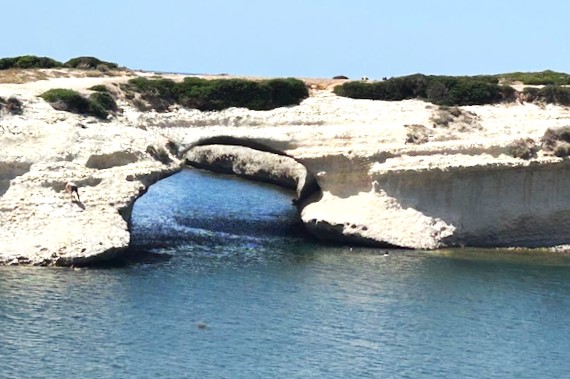
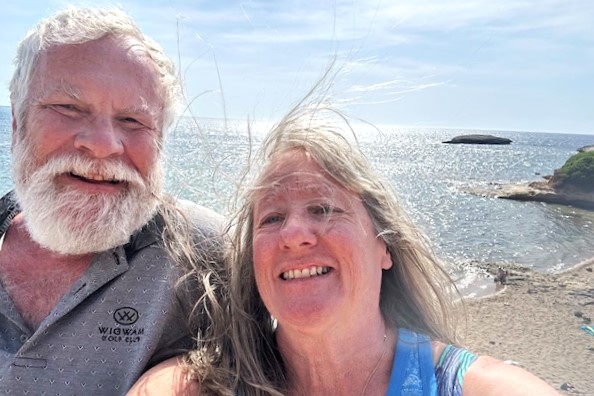
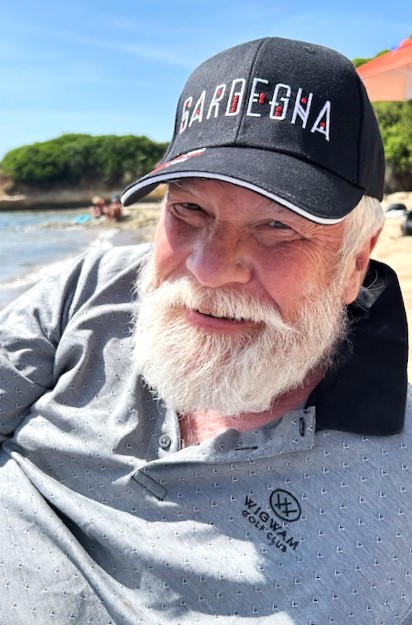
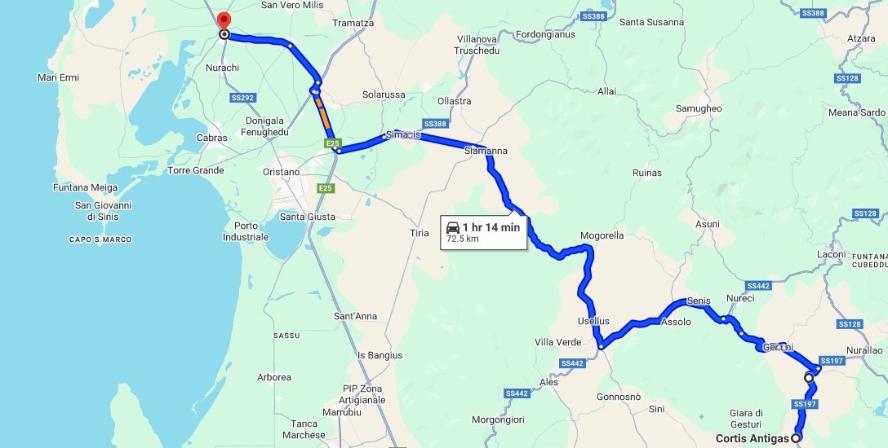
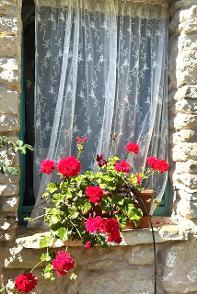
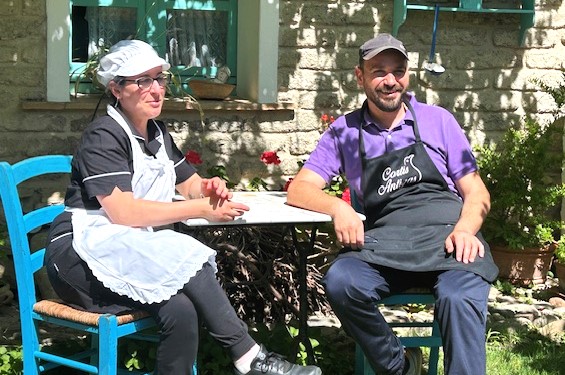
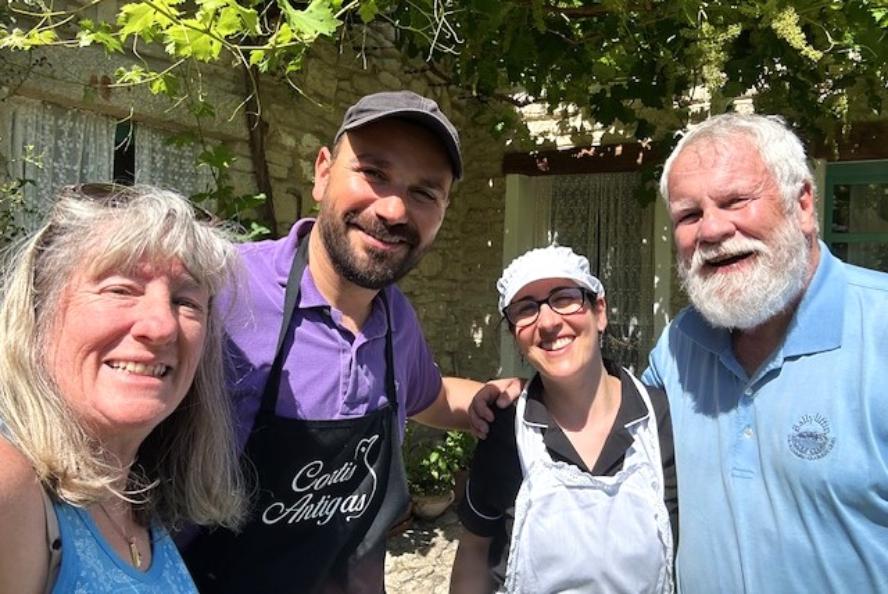
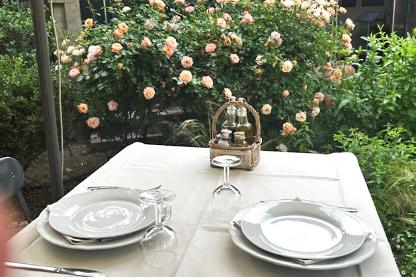
The Giara di Gesturi is a high, steep-sided basaltic plateau, formed some 2.7 million years ago when lava covered older sedimentary rock. The plateau is accessible in only a few places, known as scalas ("stairs, ladders"). Along the perimeter are the remains of 23 Nuraghi with the Nuraghic complex of Su Nuraxi di Barumini only a few kilometres to the south.
The surface of the Giara di Gesturi has a number of shallow depressions, or in Sardinian: paulis, some of which are deep enough to hold water year round. The soil is shallow, rarely exceeding 50 cm (20 in) in depth. The Giara di Gesturi is home to over 350 plant species, notably the Cork oak, and to the majority of the surviving population of the Giara Horse. Small by horse standards the total population on the plateau is estimated to be 450 to 600. The steep cliffs of the Giara Plateau have created an isolated location that has protected the wild stock in recent centuries. Sadly many were slaughtered in the 1960s when their use in agriculture was supplanted by machinery.
With Norm's knees feeling the effects of the walk we decided to split up - Gayle continuing the 5 km loop and Norm taking a rest after which he planned to head back the way we came. However, after Gayle moved on Norm saw the herd appear relatively close from the brush to romp in the water. Very cool. After enjoying the horses for perhaps 15 minutes Norm started the trek back. It was not long before he came upon the goats. Again, lots of goats munching flowers along the trail.
Along with the horses, goats and cows the plateau is home to a number of other mammals, some of which are the wild cat, martin, wild boar, weasel, hedgehog, and fox. Reptiles include various lizards, the Sardinian gongilo (a species of skink if that helps), the viper snake and tortoises. Plus there are many many birds - red woodpeckers, jays, scops owls and warblers, and in the ponds / paulis the gray heron, black-winged stilt, and on occasion flamingos. As well one can spot the Sardinian goshawk and buzzrads among others. Amphibians include the green toad and the Sardinian tree frog.
Of course there is also a multitude of plants including many protected endemic varieties that have medicinal interest.
While if asked Norm's knees may say otherwise we were really glad we visited the Giara where we saw the horses and goats. As well, it was a gorgeous day for a trek - perhaps a bit warm but otherwise great. There were very few other visitors providing a very quiet and peaceful setting to experience the animals.
Although a 20 minute drive we were so impressed with the pizzas we had at Cabo in Gergei we decided to take the drive and return for dinner tonight. Although the menu had many many pizza options Gayle again chose the Caprese pizza - why change from a great thing? - while Norm had a meat filled calzone. For dessert Gayle could not resist the tiramisu - particularly when discovering it was 'Made With Love'. The entire meal was once again delicious, well worth the drive.
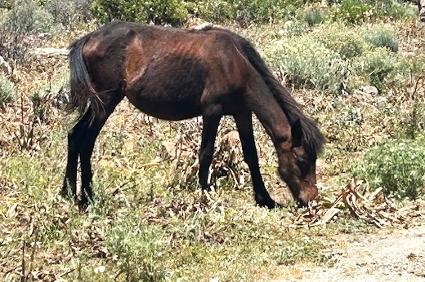
But Gayle is having none of that.
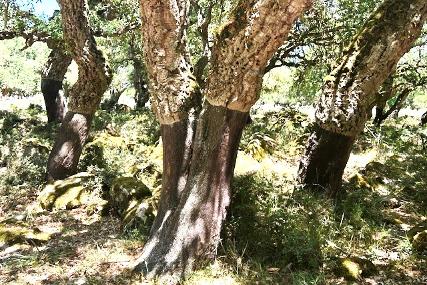
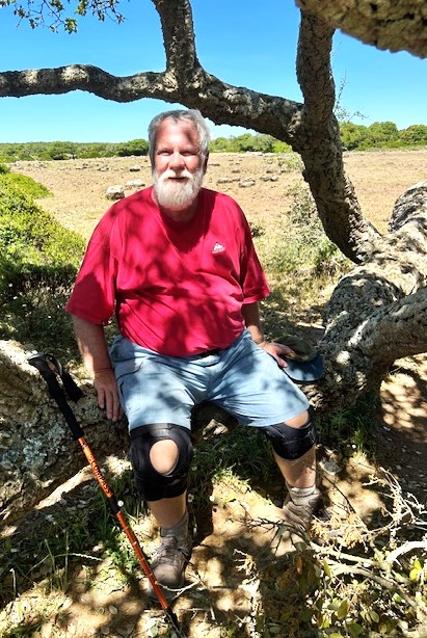
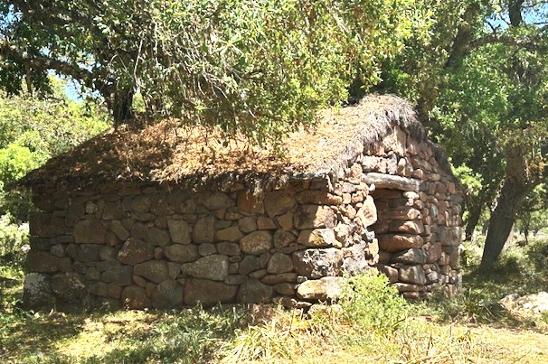
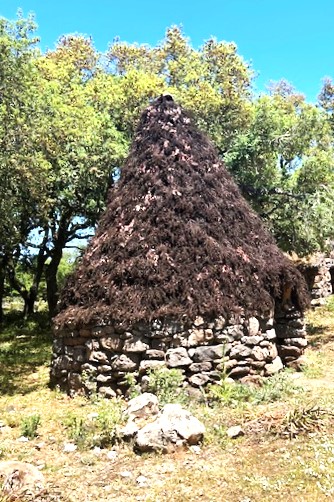
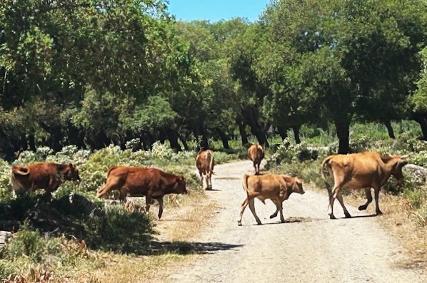
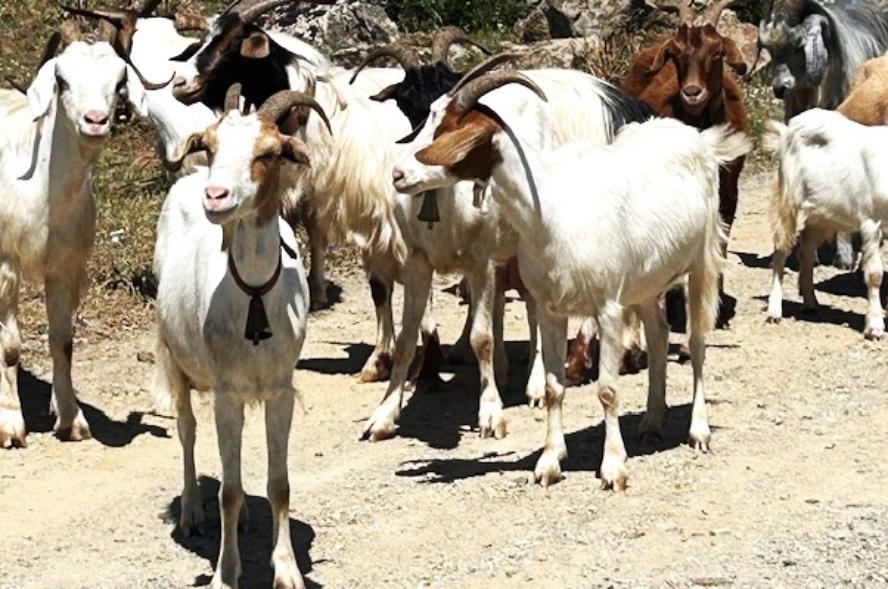
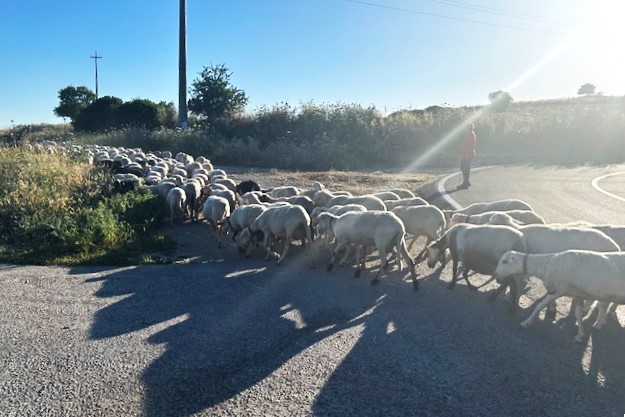
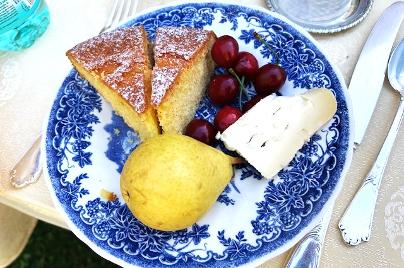
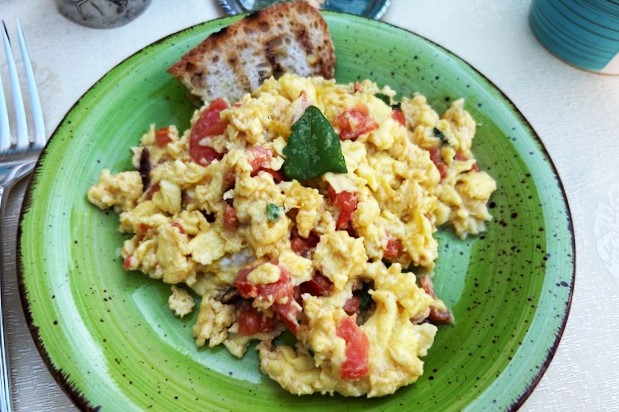
Inspite of the church being very crowded / full to capacity we were welcomed in to watch.
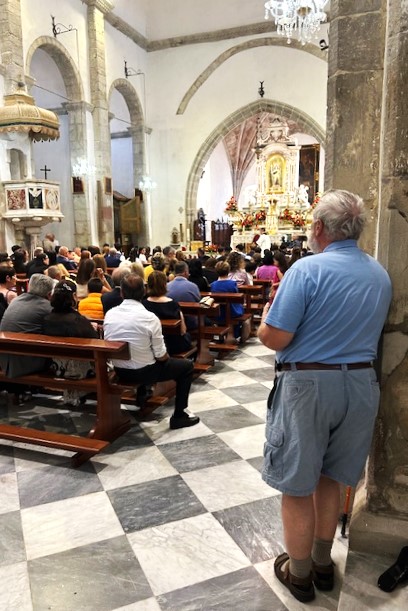
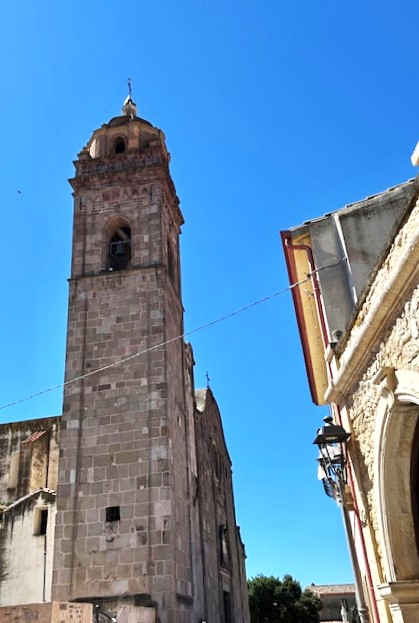
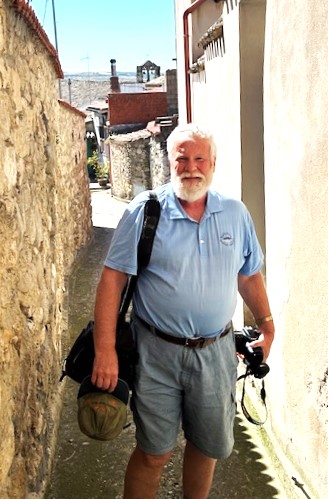
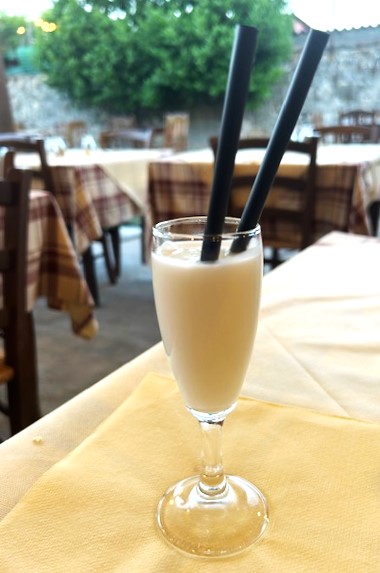
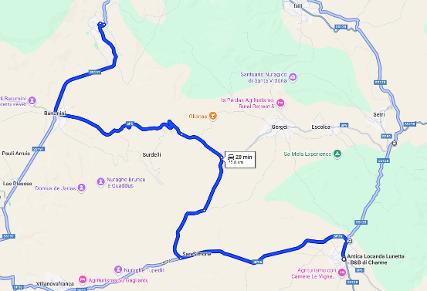
Located among cobblestone streets and ancient churches lies the structure that was built for a noble family in the 19th century. Within the manor home it is possible to see the ingenious building techniques of ancient local traditions: stone walls, mud and straw bricks (ladiri), roofs made of wooden beams and reed, and original flooring of the period. The lodging is inserted into the heart of the historic center of Gesturi, among charming streets, beautiful homes, and more than a dozen churches.
Our friends Linda and Bill, who had stayed here a couple of weeks earlier, had recommended Room 4 and right they were. A very nice room on the ground floor with a large private outdoor area we were beyond happy. Furthermore the room was ready when we arrived early around 1:00 ish, a very nice benefit. Ignazio warmly welcomed us explaining what to see and do in the area.
We spent the afternoon simply relaxing on this beautiful property.
For dinner we made the 'long' (60 metres) trek to La Taverna del Conte Pizzeria, just around the corner. Crowded with a large group of school children possibly celebrating the end of the school year we had a light meal starting with Proscuitto e Melone for Norm and a Caprese salad for Gayle. We then shared a tasty Tagliatelle Ai Funghi Porcini (noodles with mushrooms boletus). It was an equally short walk back to Cortis Antigas where we worked on our travel blogs for a while before calling it a night.
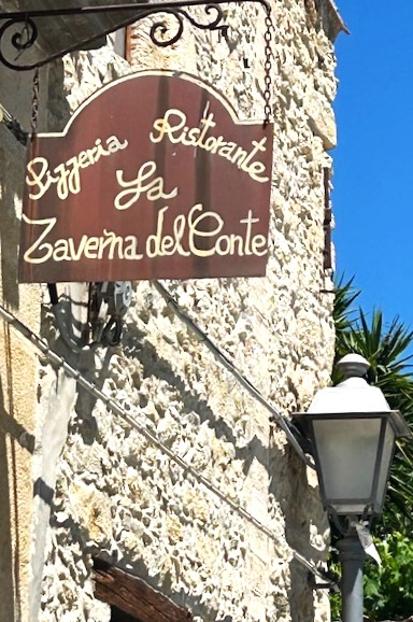
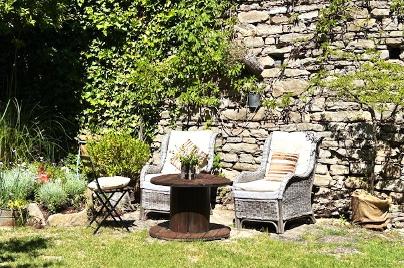
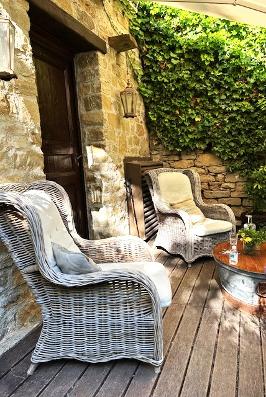
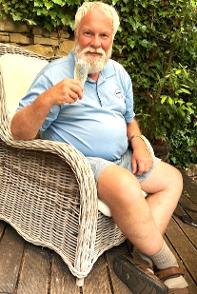

The uniqueness of this area is the presence of reservoirs of both freshwater and saltwater, separated by a plain called Is Arenas ('The Sands'). Areas with fresh water were created to expand rainwater tanks. Areas of saltwater ponds existed for the production of salt.
From 1850 to now, 230 bird species belonging to 53 families have been recorded in the Molentargius area, the most prominent of which is the flamingo.
In the salt pans and the pond of Molentargius, one can see large colonies of flamingos lay eggs and then raise their pulli (as they call the little flamingo), as soon as they hatch.
The most exciting time to see pink flamingos in Sardinia is during the first weeks of June when these birds decide to stop, nest and lay their eggs, forming an extended 'pink cloud'. The best moment of the day to spot flamingos is just before sunset, when everything turns pink, from the mountains to the salt pans. The silhouettes of flamingos in flight, forming a 'v' shape, stand out in the sky, creating an exciting spectacle every day.
Salt extraction ended in 1985 because of water pollution, an event that all the citizens of Cagliari will not forget, since it represented a turning point in the relationship between the City and the wetland. Although the salt production has been abandoned the water circulation in the evaporation and salt pans has been maintained in order to safeguard the delicate habitats for flora and fauna.
While interesting and informative thanks to our tour guide Marcello in all honesty the tour was a tad disappointing. Yes there were lots and lots of flamingos but they were quite a distance away, and looking at them through a telescope is just not the same. Even more frustrating was not having the telephoto lens on the camera the few times flamingos passed by relatively close. Thanks to signiciant cropping of the photos of the flamingos there are some decent ones below.
The drive out of Cagliari was amazingly very easy with one highway taking us directly from the salt flats north of the city. From there we drove through considerable agricultural land, the area being described as 'the bread basket of Sardinia' with a lot of wheat fields.
Being later in the afternoon we drove straight to the town of Mandas with a population of 2,400. The town, once a flourishing Spanish duchy or territory / area of land ruled by a duke or duchess. Today it is now somewhat non-descript. However we were very much looking forward to our stay at Antica Locanda Lunetta, that looked very inviting from their website.
The building dates from the 17th century, originally serving as a post station, then a peasant residence where Barbara's great-grandparents hosted guests a century ago.
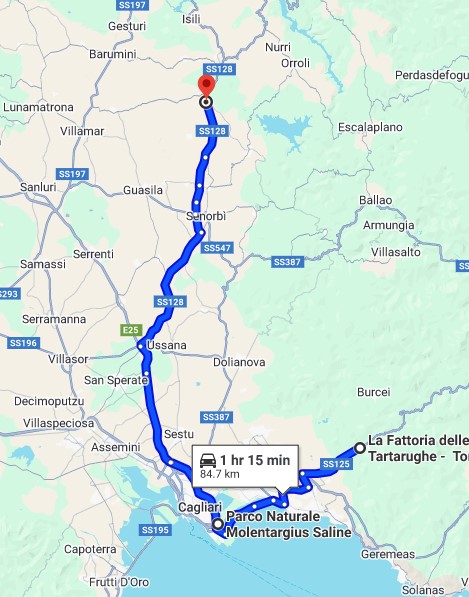
We were met by Agostino who welcomed us with cappuchinos, enjoyed in one of the many seating areas in this oasis in the middle of town. There are a number of rooms in the Ancient House, the oldest part of the building and two suites in buildings that once housed the stable and animals. Ours was one of the suites on the ground floor with a private patio. A tastefully decorated room that as a bonus had a nice large tub in the bathroom, which Norm knew his aching kees were going to appreciate.
Agostino offers an 'appetizer' plate. For 15 euros for the half portion (plus 4 euros for the second glass of wine) we were not expecting much. But we were beyond pleased with what we were provided - essentially a charcuterie that included Sardinian bread, meat, cheese, artichokes, beans and a dip, along with wine. In fact it was enough that we decided to skip going anywhere for dinner and rather sit on our terrace, enjoying the ambiance of Lunetta. After it got dark twinkly lights on the nearby lemon tree created an absolutely romantic environment. Perfect!
A few final images of La Fattoria della Tartarughe.
'M' is for Marco.
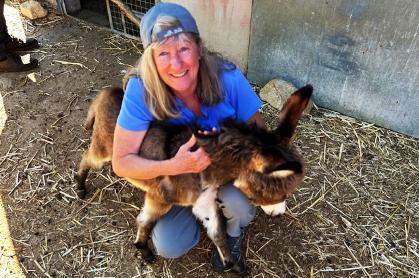
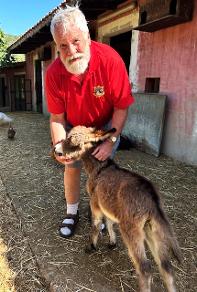
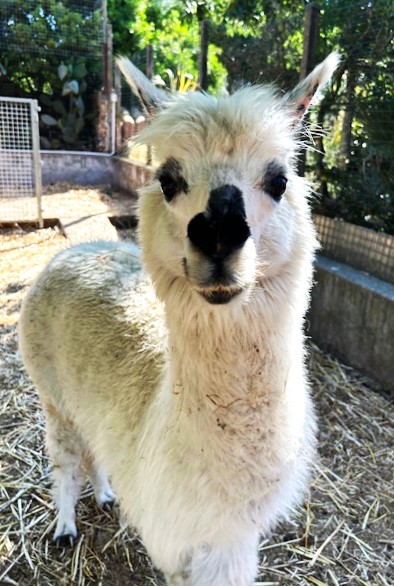
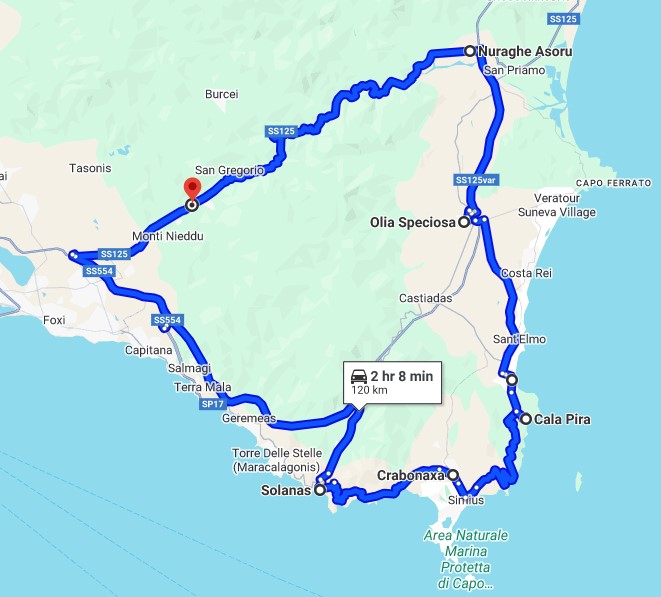
“At the Fattoria we are pursuing sustainable tourism, simply meaning respect for nature and others. It means respecting animals and their rhythms and welcoming the absence of TVs. It means a committment to reducing our footprint on the environment and to leave room instead for the footprint that a holiday can leave inside us if lived in good harmony with the beauty of the place and therefore with ourselves” (Marco and Loris).
The farm is full of flowers, plants, animals, and a cork oak forest. Nearby are some of the most beautiful beaches in the south of Sardinia and trekking routes of the Monte dei Sette Fratelli. As well Cagliari, rich in culture and atmosphere with a number of archaeological sites is easily accessible.
After two great, but short, two night stays we are here at Tartarughe for four nights. As is often the case when staying four or more nights our first day is very relaxed and chill, with us rarely leaving the property. That was the case today as we enjoyed a leisurely breakfast before relaxing under the trees while smelling the fragrance of the flowers and the sites and sounds of the animals, including a visit by a tortoise right outside our unit.
The afternoon was spent working on our travel blogs and having a lengthy nap before heading out to dinner as Loris was not cooking tonight. Loris recommended a pizzeria about 25 minutes away in the town of Sinnai. There was a much closer option but he did not have much good to say about it. So off we went. We struggled a bit to find the pizzeria but unfortunately were ultimately successful. We say unfortunately as the food did not impress. The salad and pizzas were really not very good. The salad was advertised as having San Marzano tomatoes; but rather only had cherry tomatoes - good, but still. In our view a bowl of tomatoes and greens is not much of a salad. Then the pizzas - yes the crusts here in Sardinia are 'thin' but should not be virtually non-existent in the middle such that it fell apart in a pile of soggy sauce. Not appealing.
Now knowing the way, the drive back was quite easy. Back at the farm it was soon to bed.
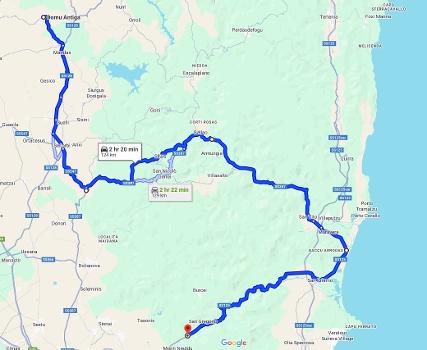
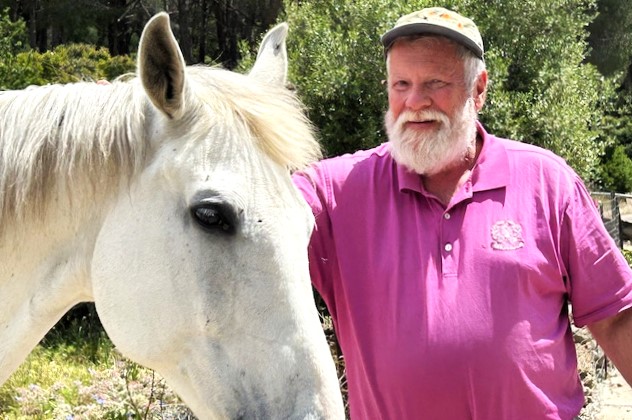
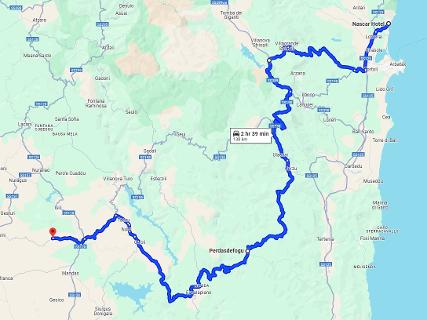
The hotel is located in the historic centre of Santa Maria Navarrese, opposite the old church of the eleventh century, the famous thousand-year-old olive trees and a few steps from the beach where the Princess of Navarre landed during a shipwreck in 1052.
The structure, built in 1800, was originally intended for agricultural use, the ground floor reserved for the production of wine and the first floor used as a granary for the storage and processing of agricultural products.
Among these were the dried figs, nutritious and long-lasting, excellent for accompanying shepherds and farmers during hard days in the fields. In the current restaurant room, the remains of the tank where the grapes were pressed by foot until the 50s are still evident.
In 1991, after several changes of hands and decades of neglect, the old dilapidated but rich in history barn was purchased with the idea of transforming this monument of local history into a hotel. Eventually, and after many obstacles the restoration by local artisans, carried out exclusively with local materials, resulted in the hotel finally opening in 2008.
The building, built in local granite, is located a (long) stone's throw from the sea, surrounded by a small garden characterized by various endemic plant species including centuries-old holm oaks, strawberry trees, juniper, myrtle, mint, rosemary, sage, and laurel.
In the afternoon we headed out to the two recommended beaches - Spiaggia Cea and Spiaggia Di Lido Di Orri. Both were beautiful long sandy beaches. We spent more time at Di Orri where we went in for a swim. A tad cool initially once one got into the water it was actually quite nice. Norm, after his swim, of course had his compulsory beach nap. We tried to imagine how busy these beaches will be in the heat of the summer.
We then returned to Nascar where we again had dinner. For Gayle really enjoyed the Verdure marinate con spuma di ricotta mustra affumicata (marinated vegetables with smoked ricotta mousse) and for Norm Pane 'Zichi' al ragu di capra montecato al pecorino (typical Bonorva's flatbread with goat ragu creamed with pecorino cheese). For dessert Gayle watched the creation of her Tiramisu Espresso - two spoons of course.
It was a great day in that we got our beach time.
In 2000, the 70 hectares exclusively used for rearing livestock were rethought: from a large stony ground to a farmhouse overlooking Lake Cedrino.
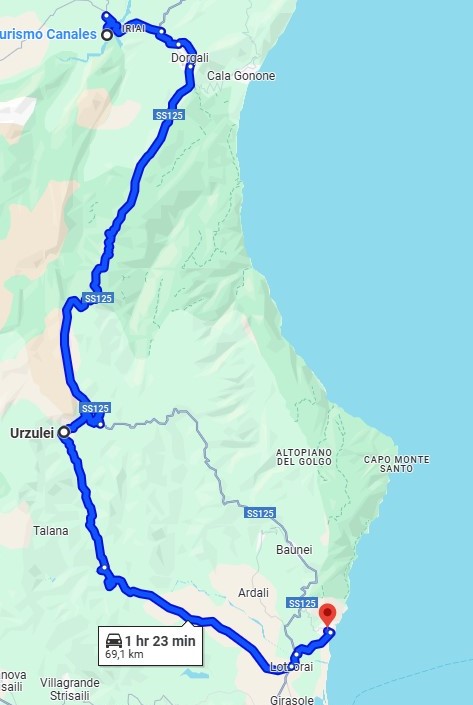
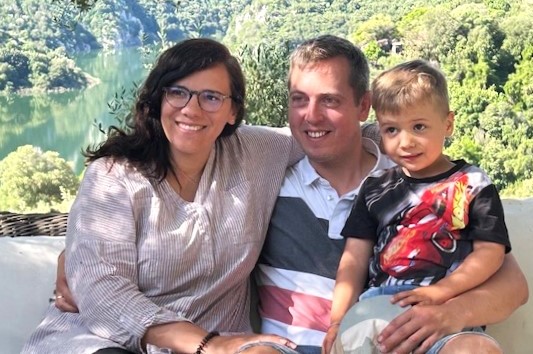
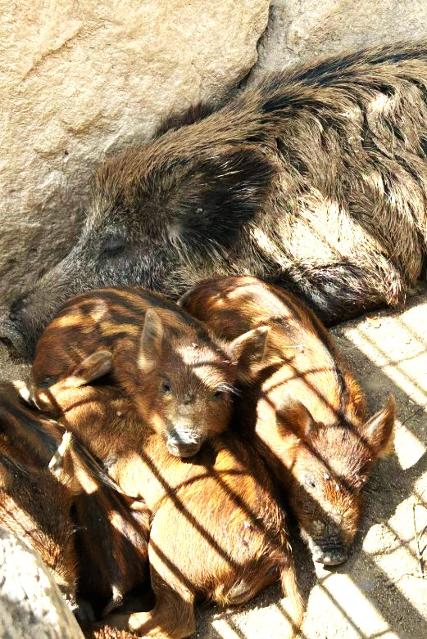
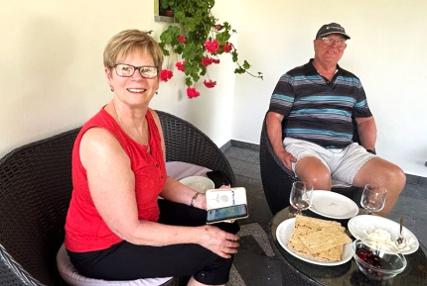
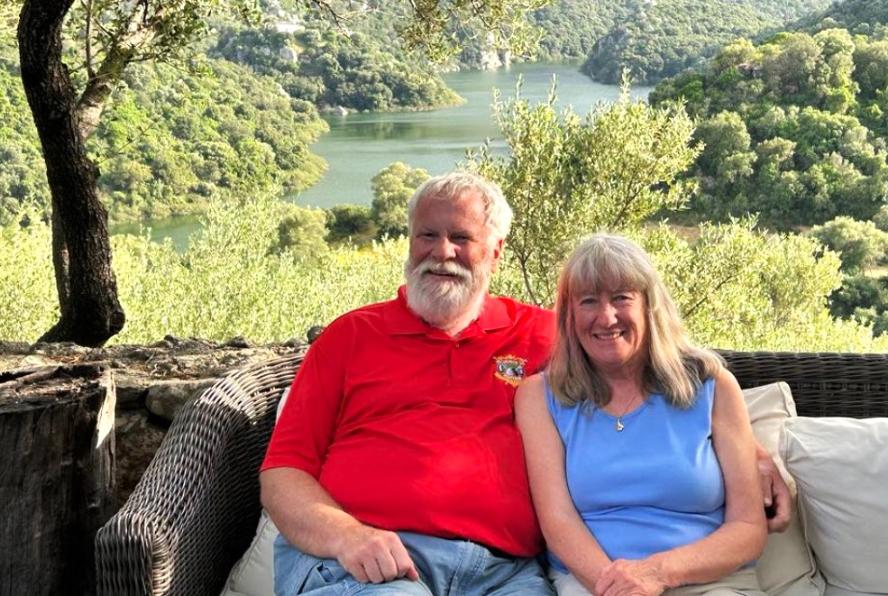
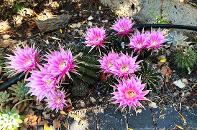
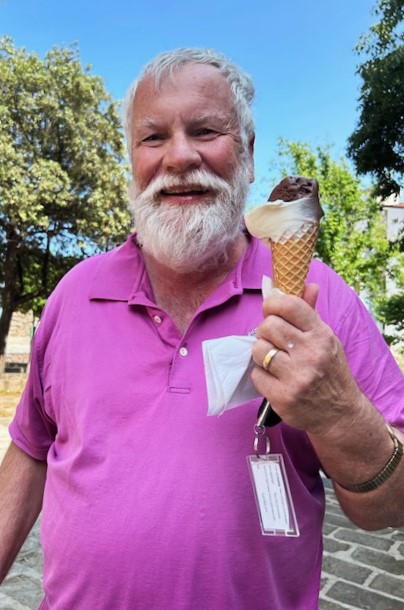
Agriturismo Canales was easy to find just off the road to Dorgali. First impressions are very positive with beautiful views to the river in the canyon, the well decorated reception / breakfast area and the bright and open dining room. Not to mention our large and well designed / furnished apartment.
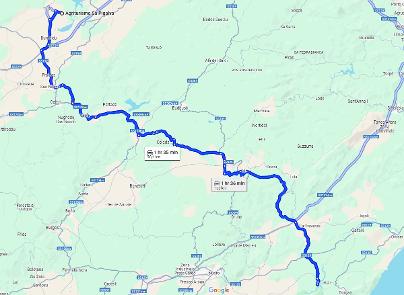
As we approached Agriturismo Canales we encountered a large flock of sheep on the road. I passed them and pulled into a driveway to get some photos / videos as they approached. Little did I know the driveway I was blocking was the driveway they were entering to return to their farm for the night. Single file they squeezed between the rock wall and me and the car. Fortunately I was able to capture the passing in a short video.
Immediately upon reaching Agriturismo Canales we knew we had chosen well. The reception area is beautiful with traditional baskets and photos covering the walls. The dining area is beautiful with large floor to ceiling windows providing views to the canyon and river. The seating areas are comfortable, again well positioned to take maximum use of the views. And our apartment is large and very functional with a full kitchen (not that we have any intention of cooking) and a large comfortable outdoor area, again with great vistas.
When we went down to dinner we were greeted by Giuseppe and a large (19) group of trekkers, most from near Venice. In exchange for taking a photo of the group (we of course would have anyway) we were offered a glass of wine each.
Dinner could be a complete four course meal, or al-la-carte. We chose a-la-carte starting with an unbelievable Degustazione di antipasti tipici - both hot and cold mixed typical appetizers. The variety and quality were quite something. Then we had the Culurgiones - pasta fatta in casa ripiena di formaggio fresco, patate e menta / homemade pasta stuffed with fresh cheese, potatoes and mint. More refined than those we had at Sa Pigalva they were enjoyable in their fresh tomato sauce. They were accompanied by a Cassola di verdure dell' orto / garden vegetables 'Cassola'.
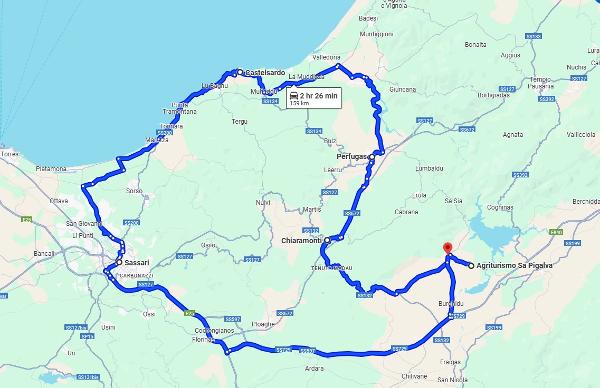
While we chose to spend time a bench overlooking the sea rather than visiting the castle that is home to one of the most visited museums in Sardinia, the Museo dell’Intreccio Mediterraneo, where traditionally-weaved baskets and other artifacts are displayed.
We continued along the coast past pine forests and beaches before reaching Sassari. Being unable to find a bypass we drove through the respectably large city, eventually finding the highway that took us back to Tula and our agriturismo.
Upon arriving we were somewhat surprised to see perhaps 20 motorcycles and many other guests. It turned out they were amazingly quiet at dinner, into the night and in the morning. By the time we went to breakfast a number of them had left without us even knowing / hearing their motorcycles. No revving at all.
There was a little confusion when we showed up for dinner - Massimo was under the impression we were going to eat elsewhere - but with the motorcycle group there was lots of food and no problem at all. We started again with fresh ricotta cheese, grilled zucchini and ham. The a Macarrones pasta in a tomato sauce followed by very moist and tasty suckling pig and potato wedges. To finish we had Tumbada, a typical Sardinian dessert, essentially an almond pudding.
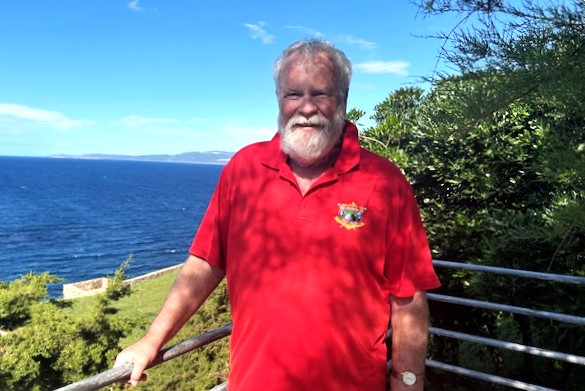
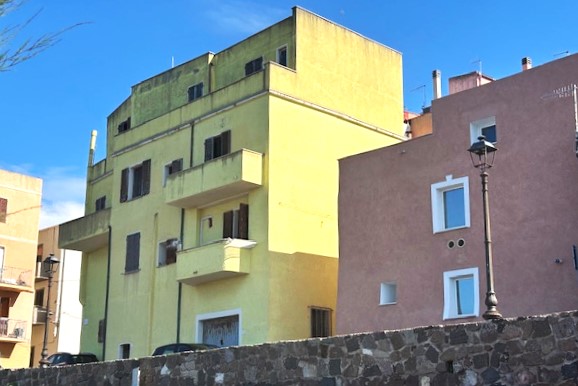
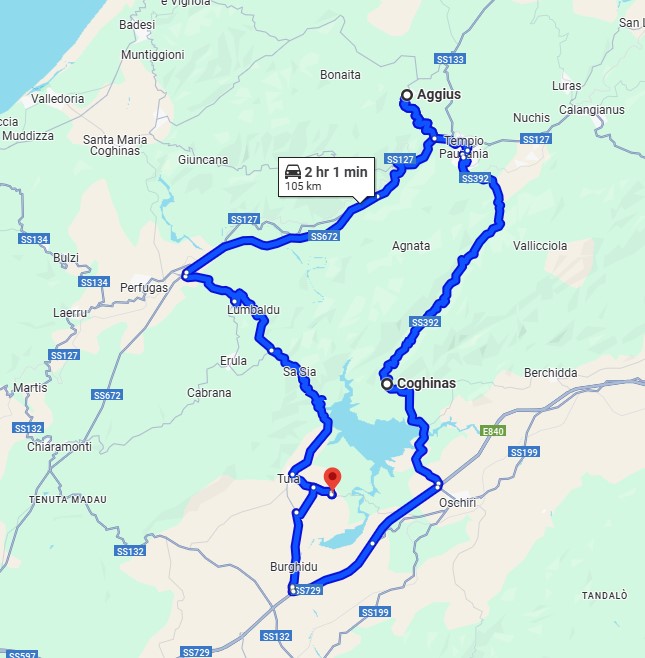
Aggius was contested for control by many until the arrival of the Aragonese and then Spanish domination. It was the Spanish presence that influenced dialects, traditions, local habits and customs in an extremely marked way. This domination lasted about 400 years until in 1720 when Aggius passed under the dominion of the Savoy.
In the first half of the seventeenth century Aggius was known as a center of counterfeiters . The 'mint' was supposedly located on one of its mountains, which for this reason was called Fraili (blacksmith's forge).
Throughout the nineteenth century the population was torn apart by numerous family feuds , the most famous of which was that between the Vasa and the Mamìa families, which inspired Enrico Costa to write his novel 'Il Muto di Gallura'. Few people know about the curious event that occurred in 1848, when Aggius became a "Republic" for forty-eight hours, hit by the movement that in Europe took the name of 'spring of the peoples'.
Aggius, with its population of more or less 1,400, is a great village to simply wander through with its granite statues, cobblestoned alleys, colourful flowers, lace curtains etc. We very much enjoyed our time there - well worth the drive. The town even has a museum of Banditry, with the town once being the epicenter of banditry gallurese for about three centuries: from the mid-sixteenth century, at the height of the Spanish to the mid-nineteenth century, under the rule of the House of Savoy. The area was known for its assassinations, ambushes and theft of livestock. Along the coasts of 'Cussorge' prospered far more completely unpunished hordes of smugglers and abigeatari, so much so that in 1726 a very detailed report Aggius was identfied as leading the country in the smuggling of cereal with a decree being issued that begins: “Having been informed that the inhabitants of the villa Agius, devoted almost all of smuggling ...“.
We returned through Tempio Pausania (didn't stop) and then south past Giagone and Lago del Coghinas.
Dinner was again filling and delicious started with a plate of ham, 1 year old sheep cheese made on the farm and artichokes. This was followed by ravioli with ricotta and spinach in a tomato sauce. The primi piatti included zucchini in cheese and sausage in a white wine sauce. Cookies and pistachio filled 'boats', along with a digestive, completed the meal.
